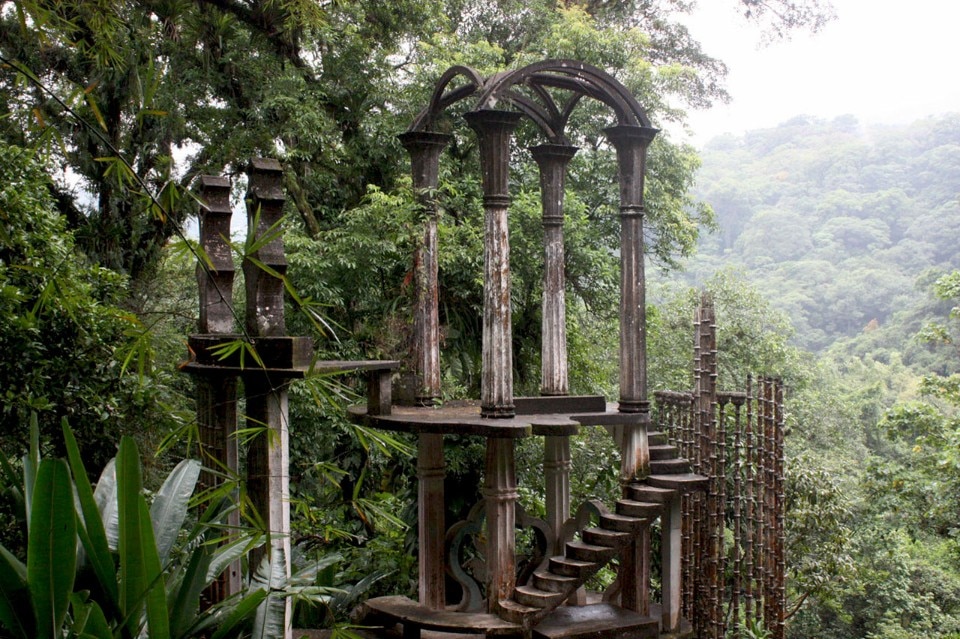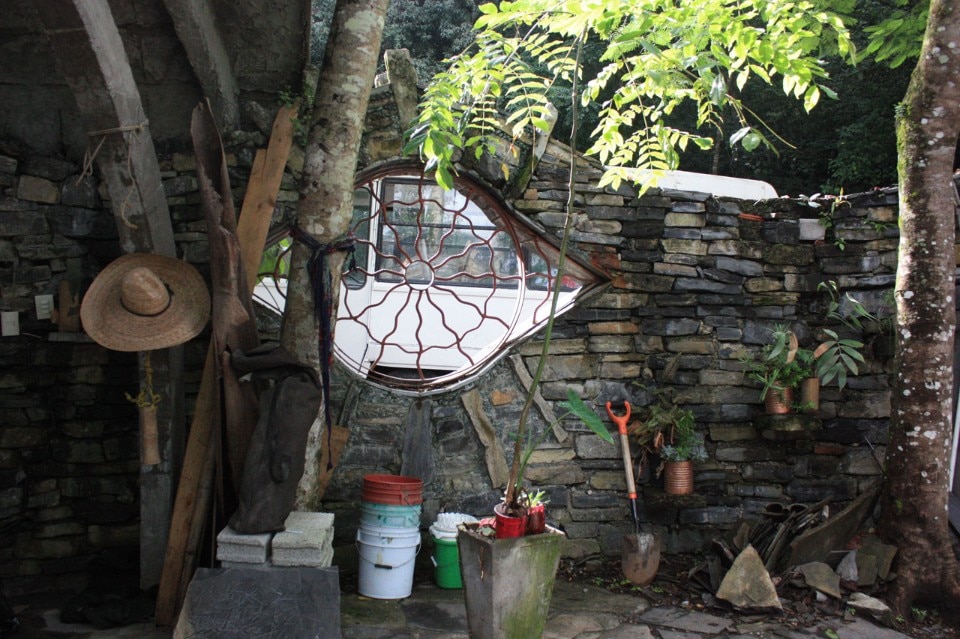This article was originally published on Domus 1029, November 2018.
A nine-hour car drive from Mexico City, Xilitla (pronounced Hilitla) is one of Mexico’s 111 Pueblos Mágicos. Nestling in the subtropical mountains of Huasteca Potosina, most of its 50,000 population still speaks Nāhuatl, the Aztec language used in Bernardino de Sahagún’s Florentine Codex, a masterpiece of ethnographic literature written in the late 1500s.
As well as a main square, market- place, and former 16th-century Augustinian convent, Xilitla features the Castillo, a four-level villa with a unique architectural style that escapes definition: part eclectic, part Modernist and with a touch of Art Nouveau, it has no stairs but large poles to slide down and plants growing everywhere. This remote location is where the owner, a wealthy Englishman, chose to build his Surrealist dream in the 1940s.
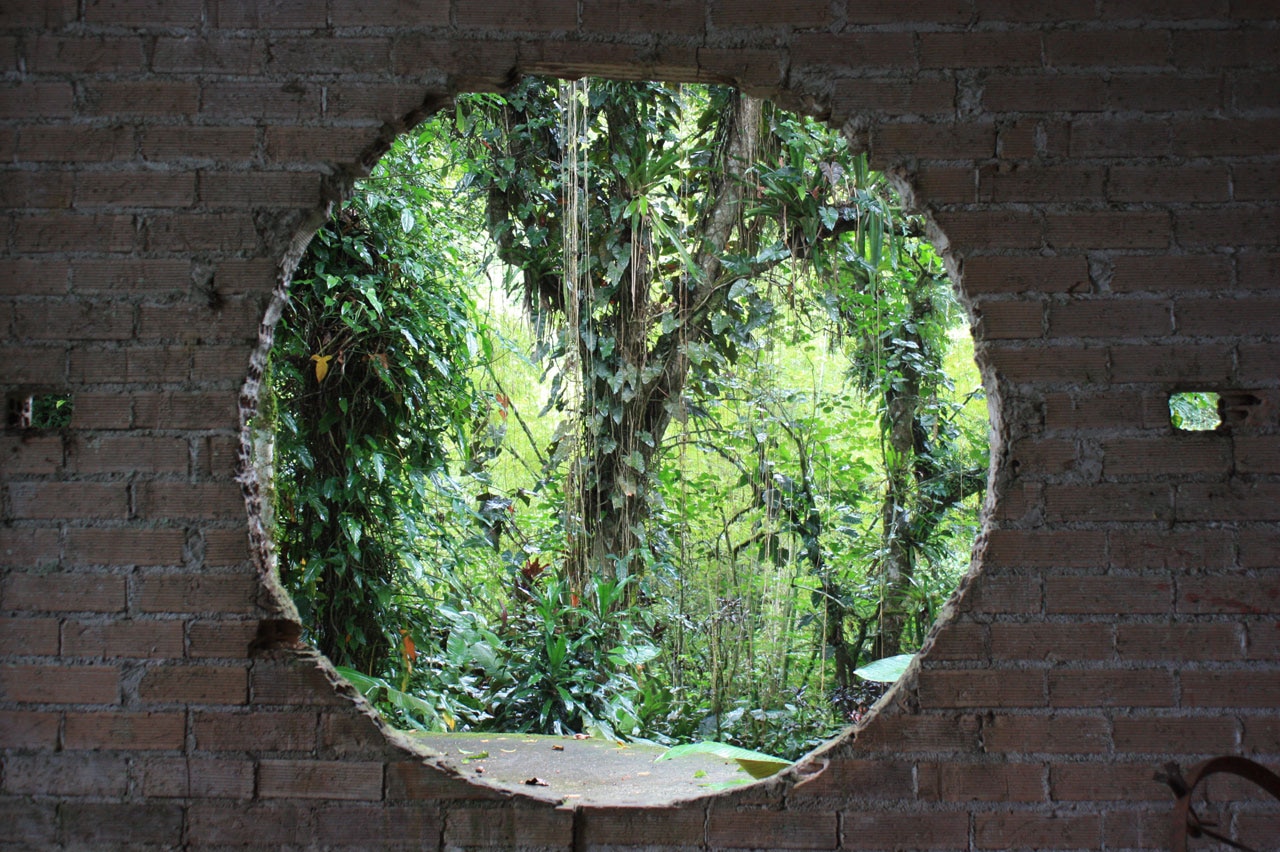
 View gallery
View gallery
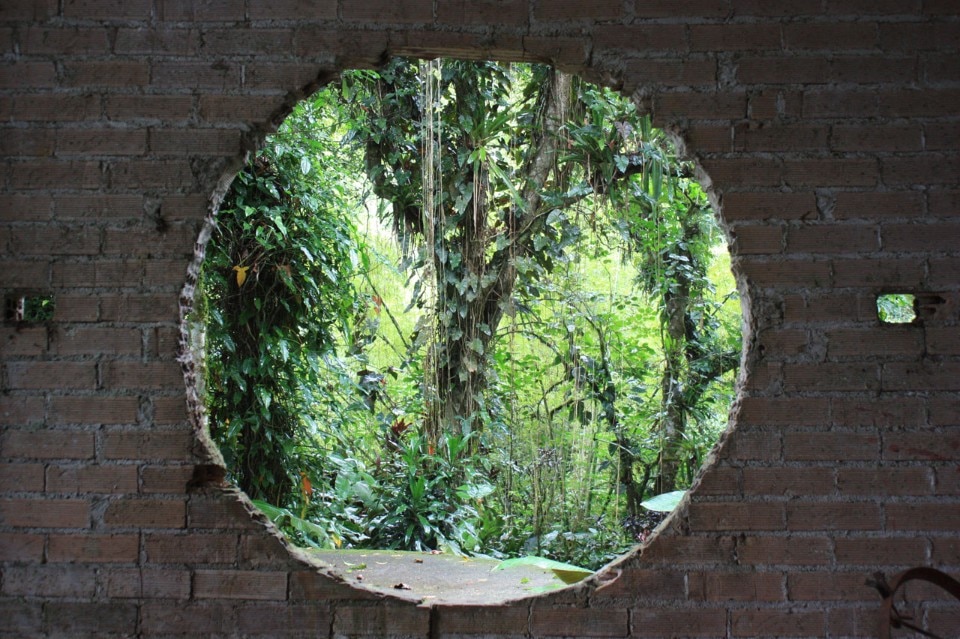
Las Pozas. A Surrealist sanctuary deep in the forest
Las Pozas originated in 1947 when Edward James purchased a coffee plantation near Xilitla, Mexico, and registered it in the name of Plutarco Gastelum, a close friend. For nearly 20 years it was home to his collection of orchids and numerous animal species including deer, ocelots, snakes, flamingos and parrots. Fascinated by Simon Rodia’s huge towers in Los Angeles, Edward James embarked on his architectural project in 1962, after a snowfall destroyed his botanic garden.
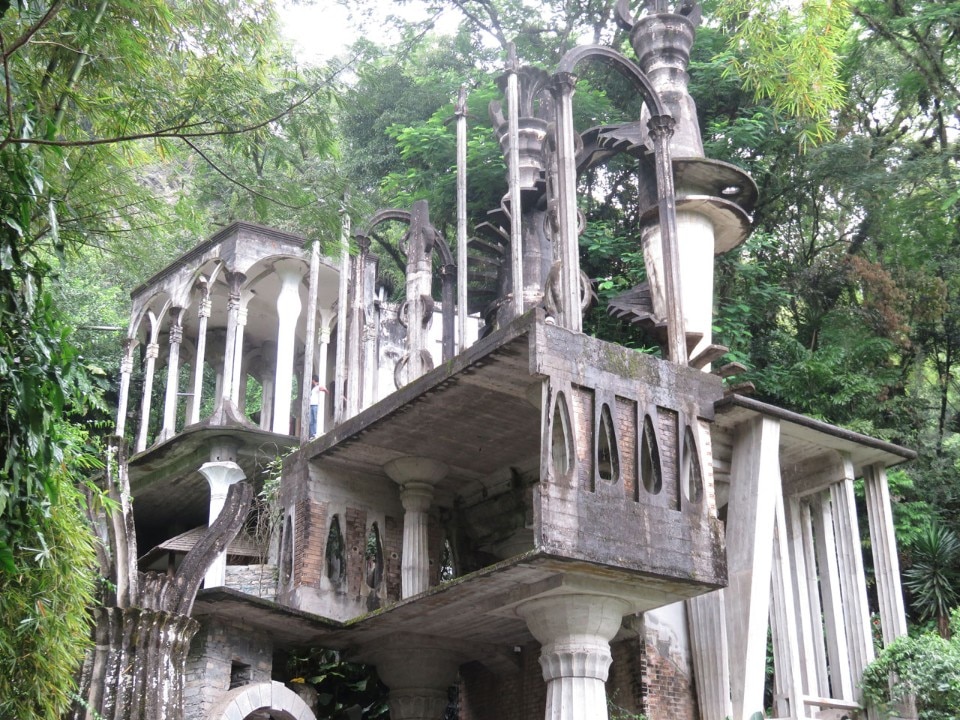
Las Pozas. A Surrealist sanctuary deep in the forest
Las Pozas originated in 1947 when Edward James purchased a coffee plantation near Xilitla, Mexico, and registered it in the name of Plutarco Gastelum, a close friend. For nearly 20 years it was home to his collection of orchids and numerous animal species including deer, ocelots, snakes, flamingos and parrots. Fascinated by Simon Rodia’s huge towers in Los Angeles, Edward James embarked on his architectural project in 1962, after a snowfall destroyed his botanic garden.
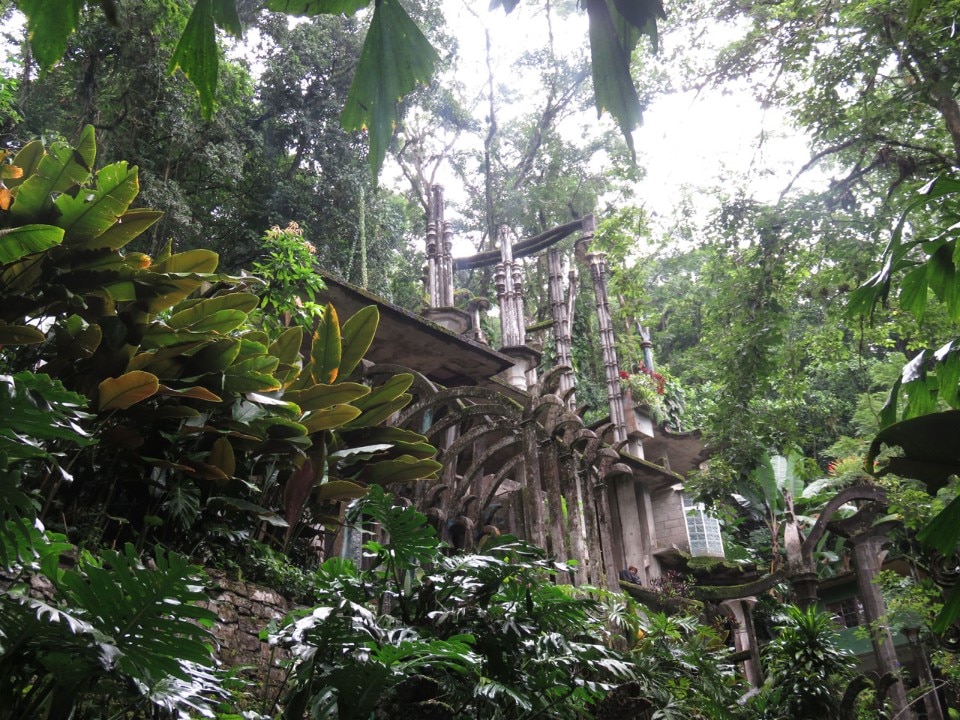
Las Pozas. A Surrealist sanctuary deep in the forest
Las Pozas originated in 1947 when Edward James purchased a coffee plantation near Xilitla, Mexico, and registered it in the name of Plutarco Gastelum, a close friend. For nearly 20 years it was home to his collection of orchids and numerous animal species including deer, ocelots, snakes, flamingos and parrots. Fascinated by Simon Rodia’s huge towers in Los Angeles, Edward James embarked on his architectural project in 1962, after a snowfall destroyed his botanic garden.
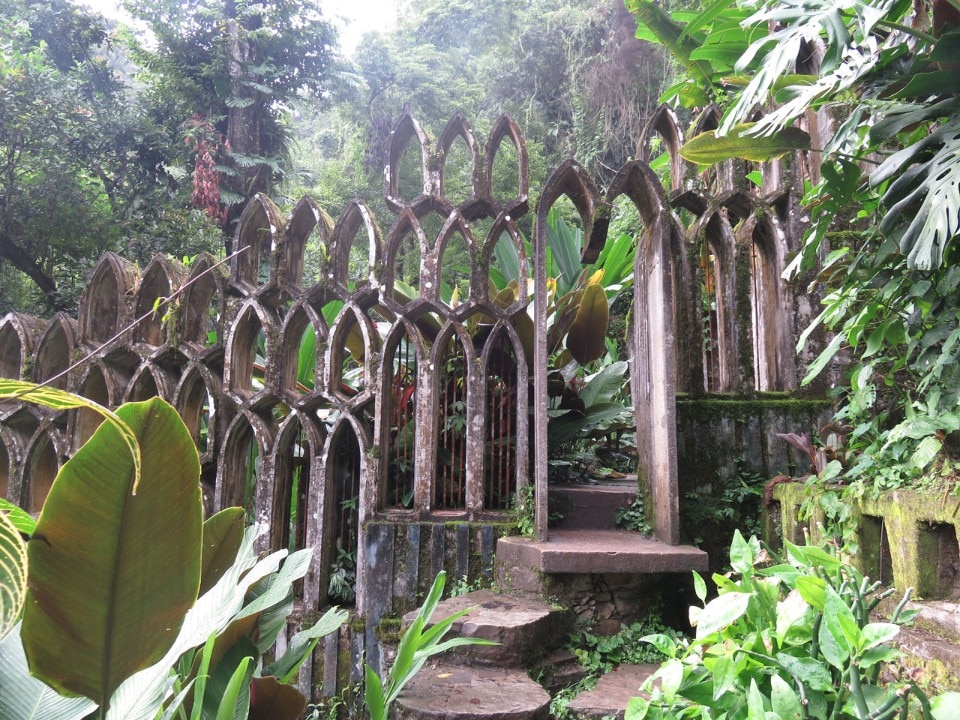
Las Pozas. A Surrealist sanctuary deep in the forest
Las Pozas originated in 1947 when Edward James purchased a coffee plantation near Xilitla, Mexico, and registered it in the name of Plutarco Gastelum, a close friend. For nearly 20 years it was home to his collection of orchids and numerous animal species including deer, ocelots, snakes, flamingos and parrots. Fascinated by Simon Rodia’s huge towers in Los Angeles, Edward James embarked on his architectural project in 1962, after a snowfall destroyed his botanic garden.
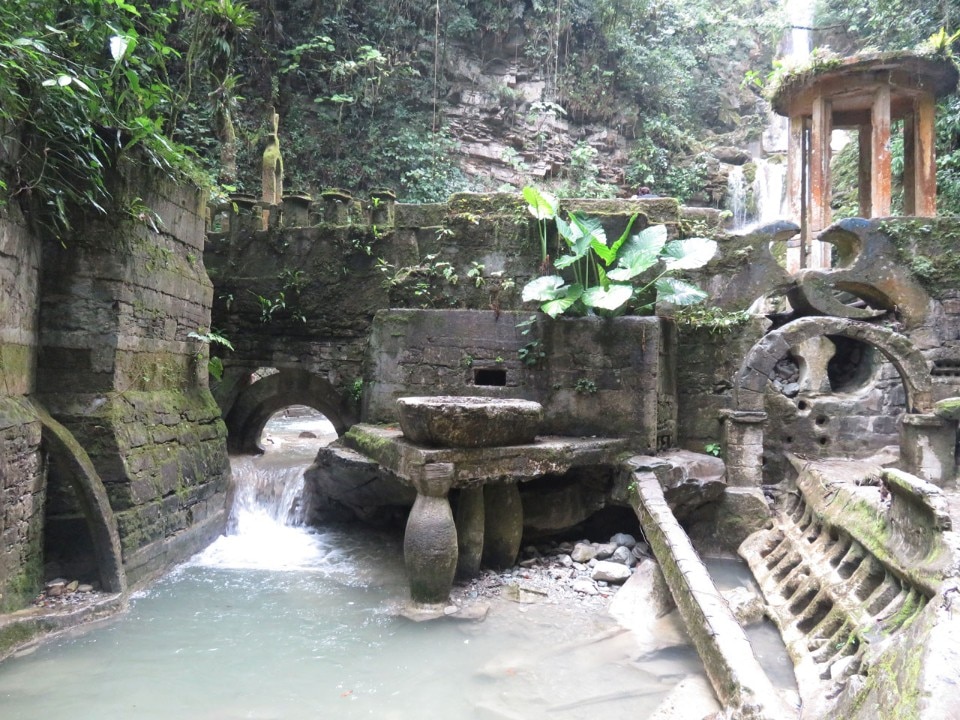
Las Pozas. A Surrealist sanctuary deep in the forest
Las Pozas originated in 1947 when Edward James purchased a coffee plantation near Xilitla, Mexico, and registered it in the name of Plutarco Gastelum, a close friend. For nearly 20 years it was home to his collection of orchids and numerous animal species including deer, ocelots, snakes, flamingos and parrots. Fascinated by Simon Rodia’s huge towers in Los Angeles, Edward James embarked on his architectural project in 1962, after a snowfall destroyed his botanic garden.
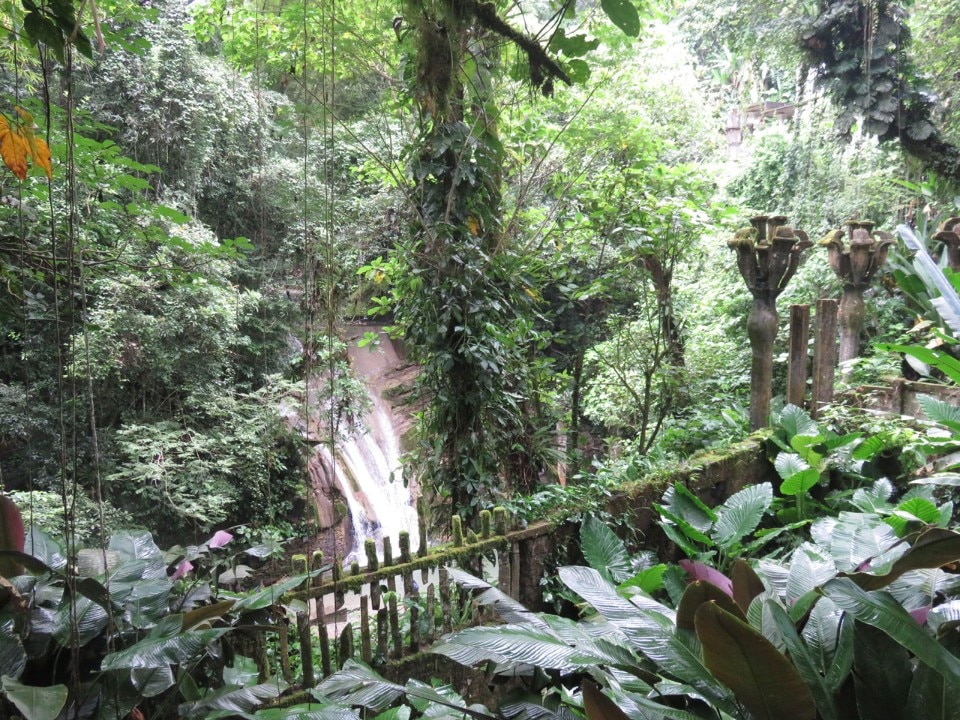
Las Pozas. A Surrealist sanctuary deep in the forest
Las Pozas originated in 1947 when Edward James purchased a coffee plantation near Xilitla, Mexico, and registered it in the name of Plutarco Gastelum, a close friend. For nearly 20 years it was home to his collection of orchids and numerous animal species including deer, ocelots, snakes, flamingos and parrots. Fascinated by Simon Rodia’s huge towers in Los Angeles, Edward James embarked on his architectural project in 1962, after a snowfall destroyed his botanic garden.
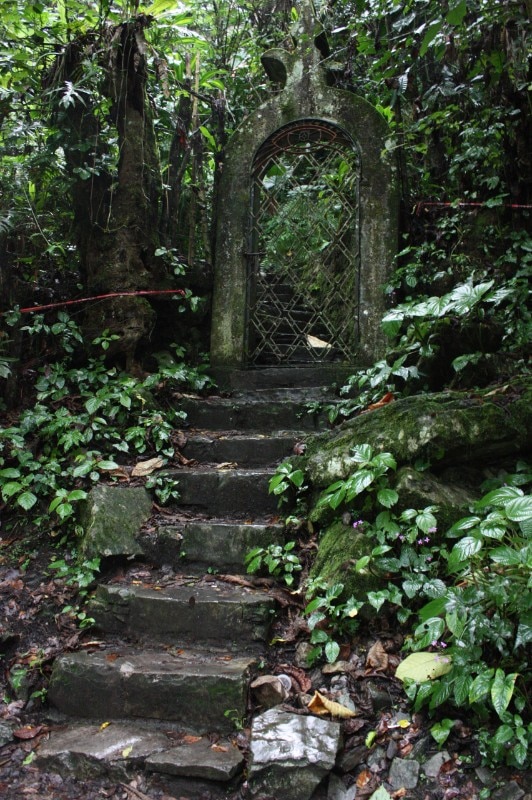
Las Pozas. A Surrealist sanctuary deep in the forest
Las Pozas originated in 1947 when Edward James purchased a coffee plantation near Xilitla, Mexico, and registered it in the name of Plutarco Gastelum, a close friend. For nearly 20 years it was home to his collection of orchids and numerous animal species including deer, ocelots, snakes, flamingos and parrots. Fascinated by Simon Rodia’s huge towers in Los Angeles, Edward James embarked on his architectural project in 1962, after a snowfall destroyed his botanic garden.
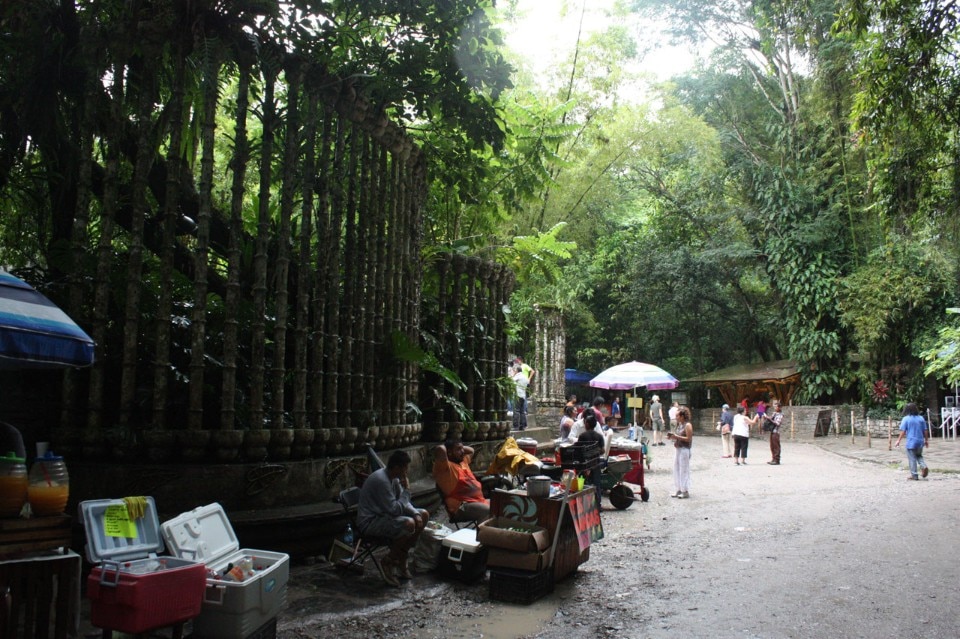
Las Pozas. A Surrealist sanctuary deep in the forest
Las Pozas originated in 1947 when Edward James purchased a coffee plantation near Xilitla, Mexico, and registered it in the name of Plutarco Gastelum, a close friend. For nearly 20 years it was home to his collection of orchids and numerous animal species including deer, ocelots, snakes, flamingos and parrots. Fascinated by Simon Rodia’s huge towers in Los Angeles, Edward James embarked on his architectural project in 1962, after a snowfall destroyed his botanic garden.
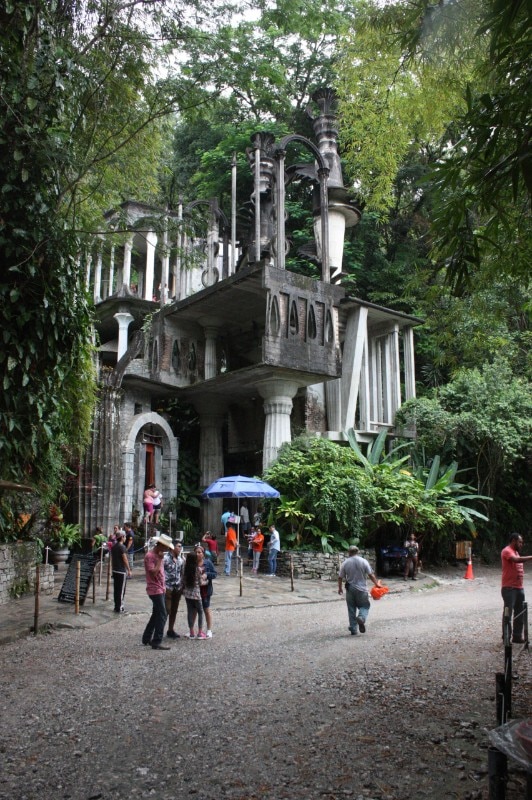
Las Pozas. A Surrealist sanctuary deep in the forest
Las Pozas originated in 1947 when Edward James purchased a coffee plantation near Xilitla, Mexico, and registered it in the name of Plutarco Gastelum, a close friend. For nearly 20 years it was home to his collection of orchids and numerous animal species including deer, ocelots, snakes, flamingos and parrots. Fascinated by Simon Rodia’s huge towers in Los Angeles, Edward James embarked on his architectural project in 1962, after a snowfall destroyed his botanic garden.
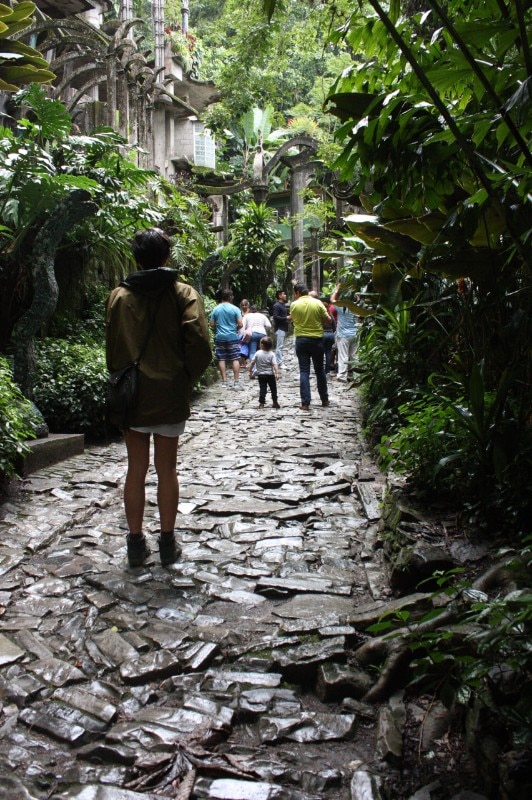
Las Pozas. A Surrealist sanctuary deep in the forest
Las Pozas originated in 1947 when Edward James purchased a coffee plantation near Xilitla, Mexico, and registered it in the name of Plutarco Gastelum, a close friend. For nearly 20 years it was home to his collection of orchids and numerous animal species including deer, ocelots, snakes, flamingos and parrots. Fascinated by Simon Rodia’s huge towers in Los Angeles, Edward James embarked on his architectural project in 1962, after a snowfall destroyed his botanic garden.
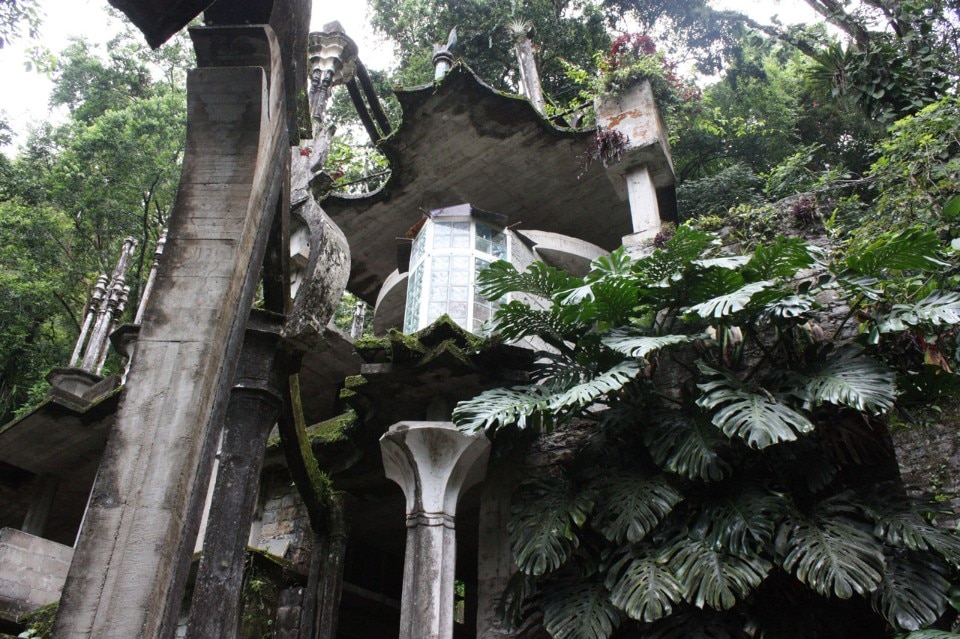
Las Pozas. A Surrealist sanctuary deep in the forest
Las Pozas originated in 1947 when Edward James purchased a coffee plantation near Xilitla, Mexico, and registered it in the name of Plutarco Gastelum, a close friend. For nearly 20 years it was home to his collection of orchids and numerous animal species including deer, ocelots, snakes, flamingos and parrots. Fascinated by Simon Rodia’s huge towers in Los Angeles, Edward James embarked on his architectural project in 1962, after a snowfall destroyed his botanic garden.
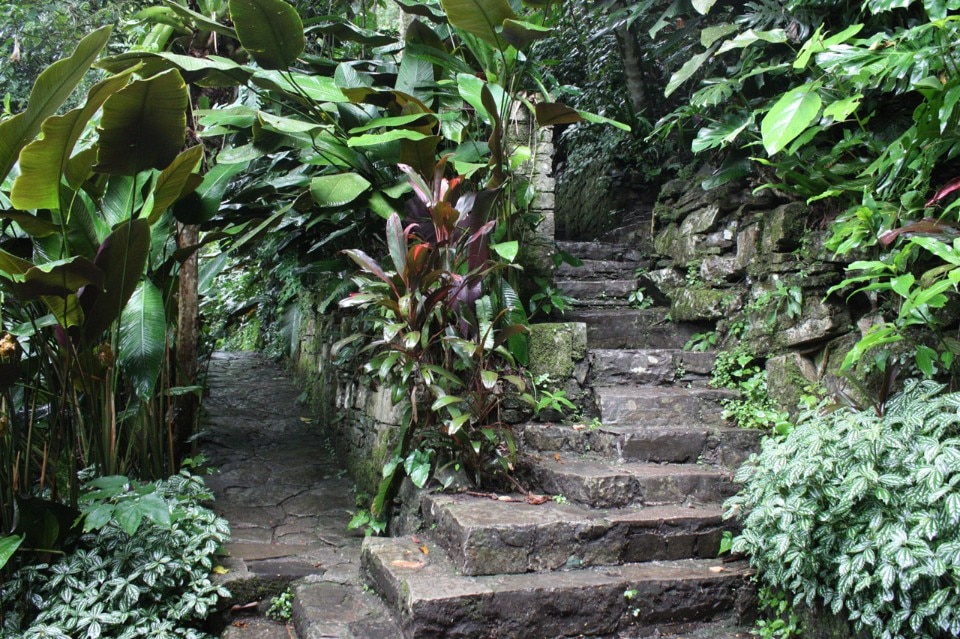
Las Pozas. A Surrealist sanctuary deep in the forest
Las Pozas originated in 1947 when Edward James purchased a coffee plantation near Xilitla, Mexico, and registered it in the name of Plutarco Gastelum, a close friend. For nearly 20 years it was home to his collection of orchids and numerous animal species including deer, ocelots, snakes, flamingos and parrots. Fascinated by Simon Rodia’s huge towers in Los Angeles, Edward James embarked on his architectural project in 1962, after a snowfall destroyed his botanic garden.
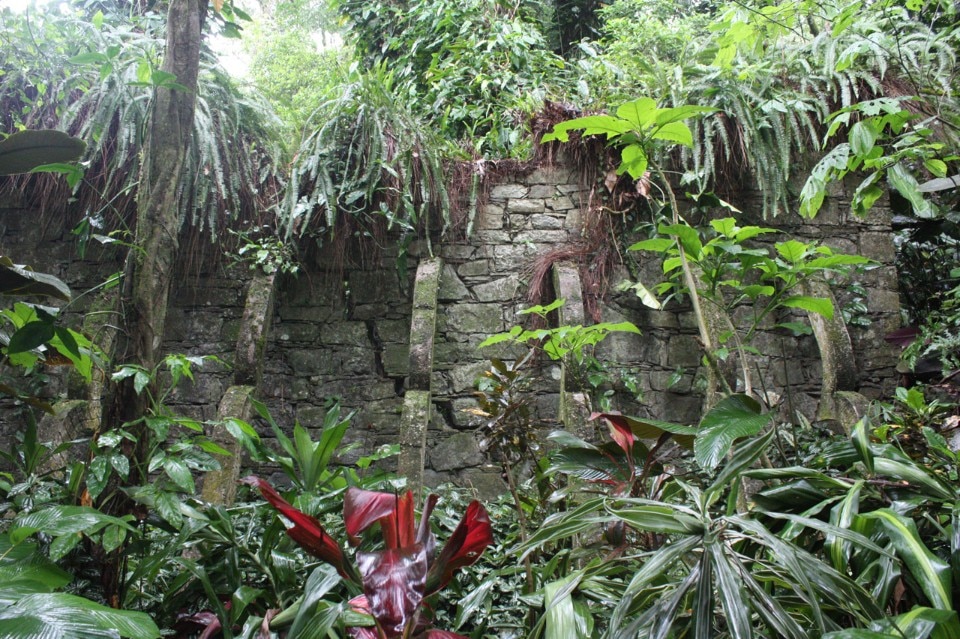
Las Pozas. A Surrealist sanctuary deep in the forest
Las Pozas originated in 1947 when Edward James purchased a coffee plantation near Xilitla, Mexico, and registered it in the name of Plutarco Gastelum, a close friend. For nearly 20 years it was home to his collection of orchids and numerous animal species including deer, ocelots, snakes, flamingos and parrots. Fascinated by Simon Rodia’s huge towers in Los Angeles, Edward James embarked on his architectural project in 1962, after a snowfall destroyed his botanic garden.
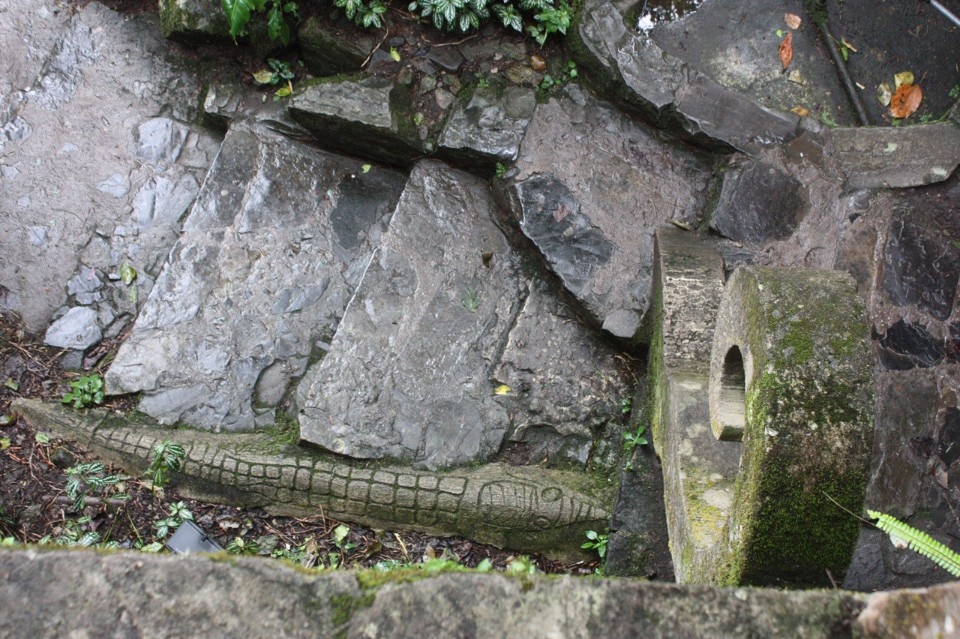
Las Pozas. A Surrealist sanctuary deep in the forest
Las Pozas originated in 1947 when Edward James purchased a coffee plantation near Xilitla, Mexico, and registered it in the name of Plutarco Gastelum, a close friend. For nearly 20 years it was home to his collection of orchids and numerous animal species including deer, ocelots, snakes, flamingos and parrots. Fascinated by Simon Rodia’s huge towers in Los Angeles, Edward James embarked on his architectural project in 1962, after a snowfall destroyed his botanic garden.
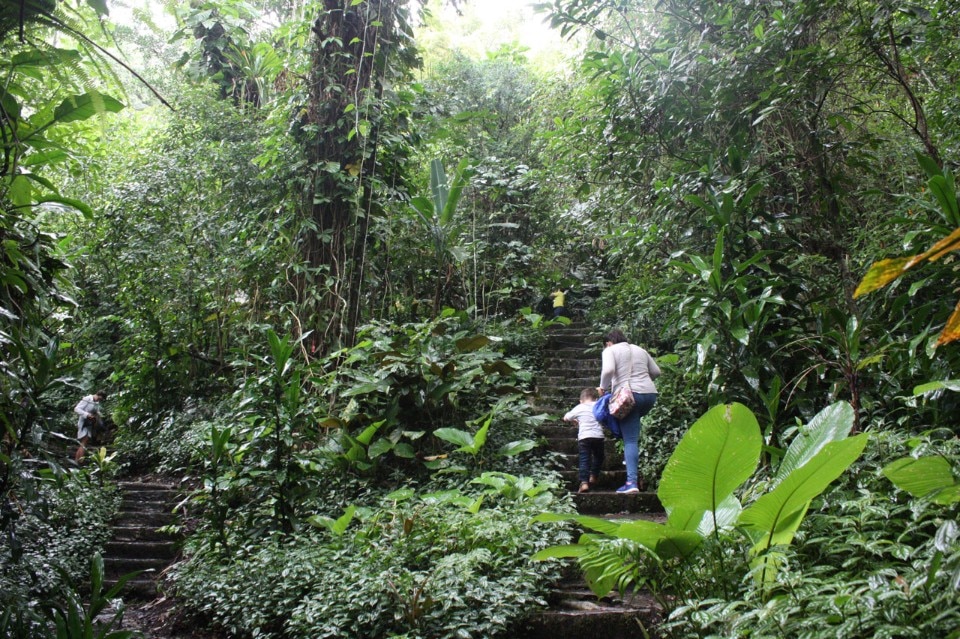
Las Pozas. A Surrealist sanctuary deep in the forest
Las Pozas originated in 1947 when Edward James purchased a coffee plantation near Xilitla, Mexico, and registered it in the name of Plutarco Gastelum, a close friend. For nearly 20 years it was home to his collection of orchids and numerous animal species including deer, ocelots, snakes, flamingos and parrots. Fascinated by Simon Rodia’s huge towers in Los Angeles, Edward James embarked on his architectural project in 1962, after a snowfall destroyed his botanic garden.
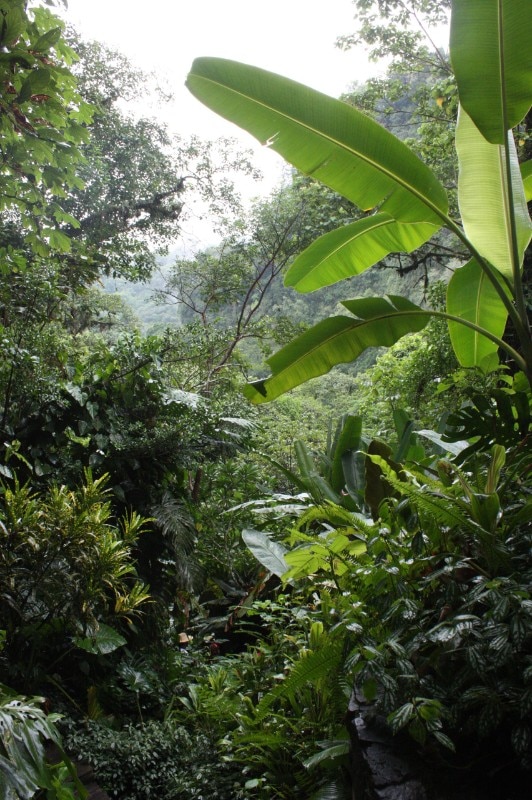
Las Pozas. A Surrealist sanctuary deep in the forest
Las Pozas originated in 1947 when Edward James purchased a coffee plantation near Xilitla, Mexico, and registered it in the name of Plutarco Gastelum, a close friend. For nearly 20 years it was home to his collection of orchids and numerous animal species including deer, ocelots, snakes, flamingos and parrots. Fascinated by Simon Rodia’s huge towers in Los Angeles, Edward James embarked on his architectural project in 1962, after a snowfall destroyed his botanic garden.
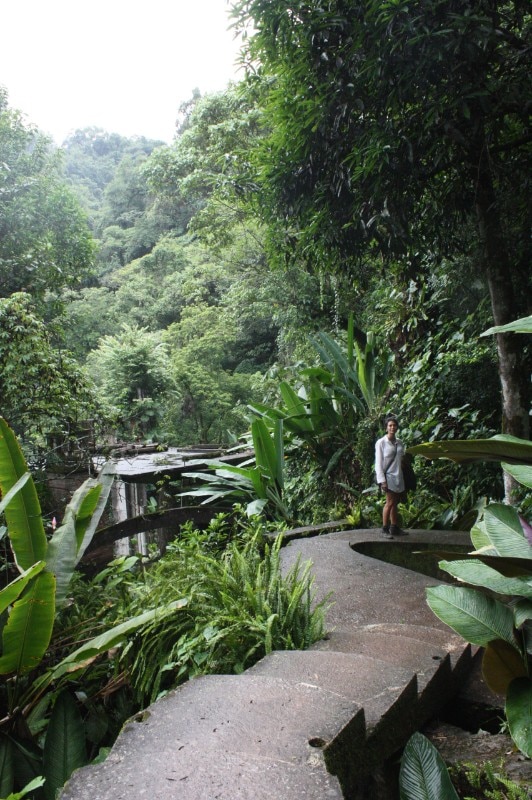
Las Pozas. A Surrealist sanctuary deep in the forest
Las Pozas originated in 1947 when Edward James purchased a coffee plantation near Xilitla, Mexico, and registered it in the name of Plutarco Gastelum, a close friend. For nearly 20 years it was home to his collection of orchids and numerous animal species including deer, ocelots, snakes, flamingos and parrots. Fascinated by Simon Rodia’s huge towers in Los Angeles, Edward James embarked on his architectural project in 1962, after a snowfall destroyed his botanic garden.
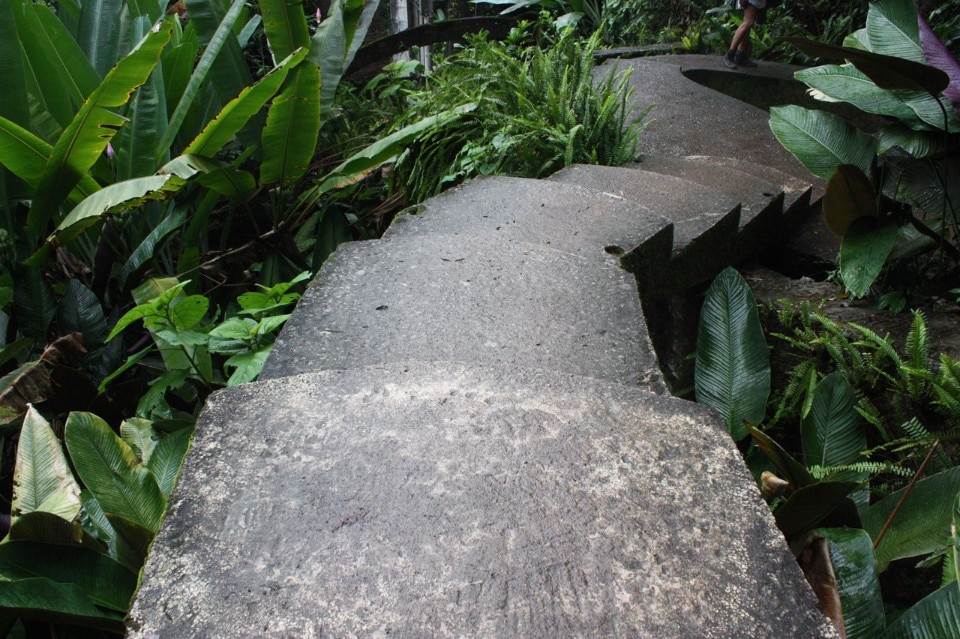
Las Pozas. A Surrealist sanctuary deep in the forest
Las Pozas originated in 1947 when Edward James purchased a coffee plantation near Xilitla, Mexico, and registered it in the name of Plutarco Gastelum, a close friend. For nearly 20 years it was home to his collection of orchids and numerous animal species including deer, ocelots, snakes, flamingos and parrots. Fascinated by Simon Rodia’s huge towers in Los Angeles, Edward James embarked on his architectural project in 1962, after a snowfall destroyed his botanic garden.
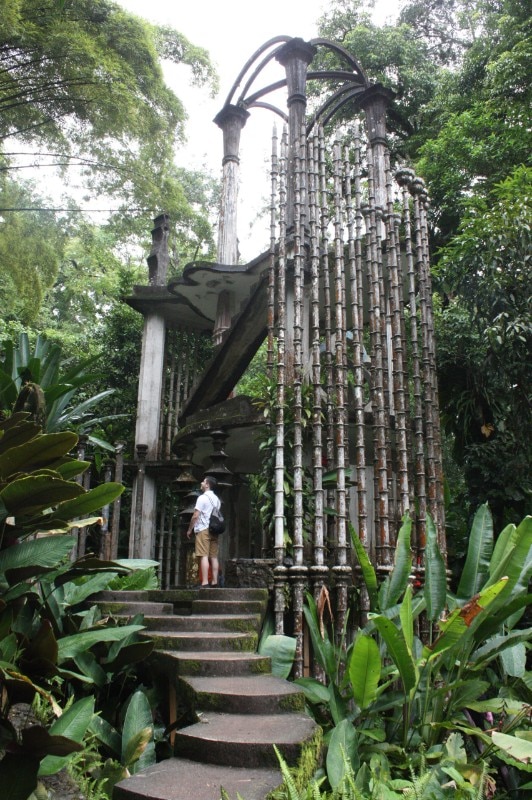
Las Pozas. A Surrealist sanctuary deep in the forest
Las Pozas originated in 1947 when Edward James purchased a coffee plantation near Xilitla, Mexico, and registered it in the name of Plutarco Gastelum, a close friend. For nearly 20 years it was home to his collection of orchids and numerous animal species including deer, ocelots, snakes, flamingos and parrots. Fascinated by Simon Rodia’s huge towers in Los Angeles, Edward James embarked on his architectural project in 1962, after a snowfall destroyed his botanic garden.
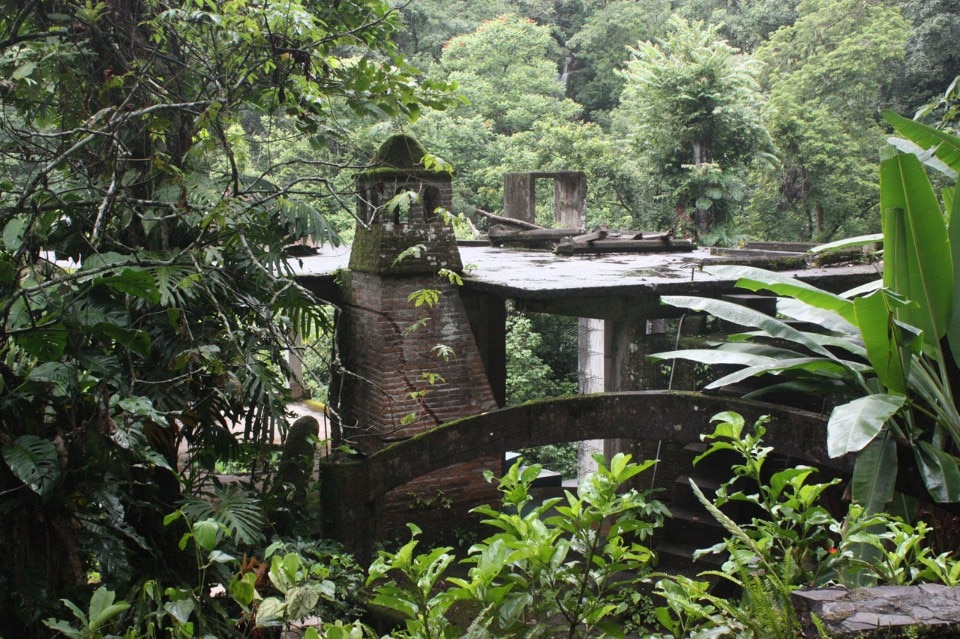
Las Pozas. A Surrealist sanctuary deep in the forest
Las Pozas originated in 1947 when Edward James purchased a coffee plantation near Xilitla, Mexico, and registered it in the name of Plutarco Gastelum, a close friend. For nearly 20 years it was home to his collection of orchids and numerous animal species including deer, ocelots, snakes, flamingos and parrots. Fascinated by Simon Rodia’s huge towers in Los Angeles, Edward James embarked on his architectural project in 1962, after a snowfall destroyed his botanic garden.
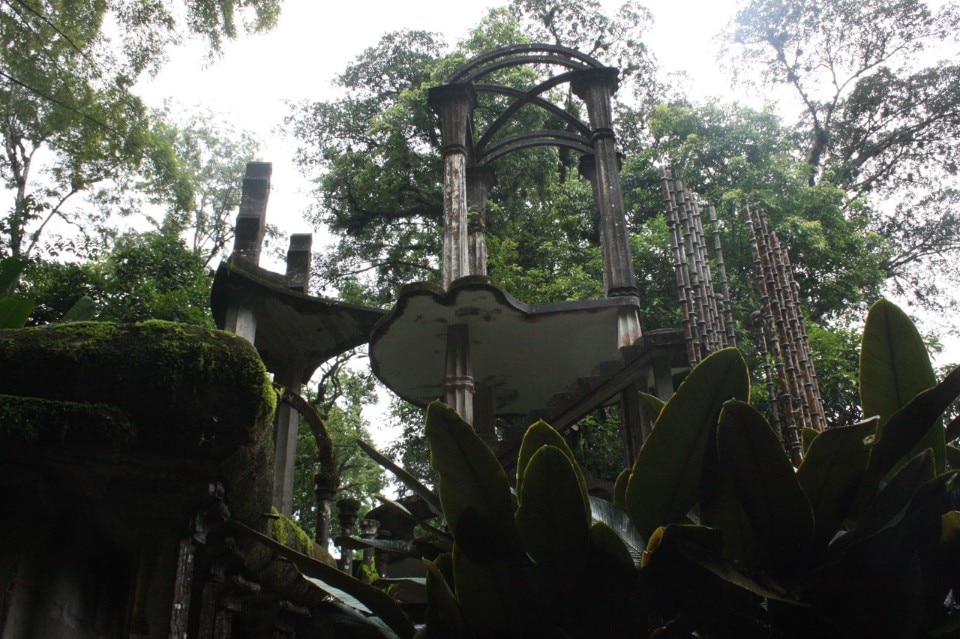
Las Pozas. A Surrealist sanctuary deep in the forest
Las Pozas originated in 1947 when Edward James purchased a coffee plantation near Xilitla, Mexico, and registered it in the name of Plutarco Gastelum, a close friend. For nearly 20 years it was home to his collection of orchids and numerous animal species including deer, ocelots, snakes, flamingos and parrots. Fascinated by Simon Rodia’s huge towers in Los Angeles, Edward James embarked on his architectural project in 1962, after a snowfall destroyed his botanic garden.
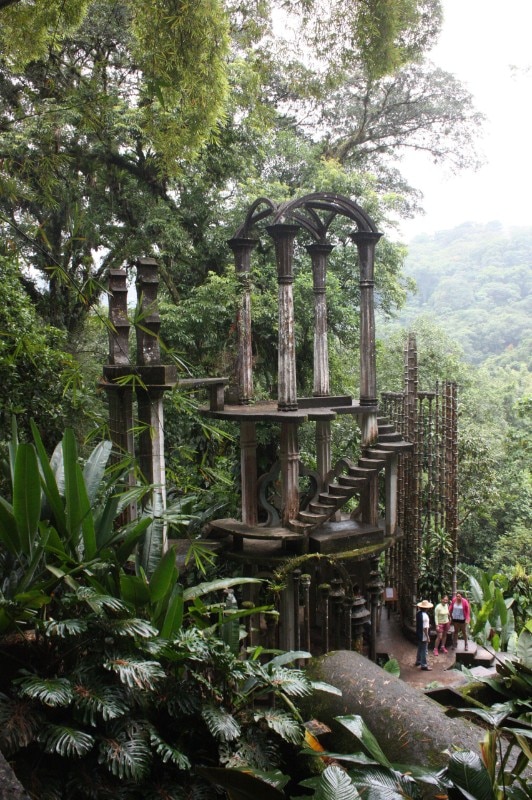
Las Pozas. A Surrealist sanctuary deep in the forest
Las Pozas originated in 1947 when Edward James purchased a coffee plantation near Xilitla, Mexico, and registered it in the name of Plutarco Gastelum, a close friend. For nearly 20 years it was home to his collection of orchids and numerous animal species including deer, ocelots, snakes, flamingos and parrots. Fascinated by Simon Rodia’s huge towers in Los Angeles, Edward James embarked on his architectural project in 1962, after a snowfall destroyed his botanic garden.
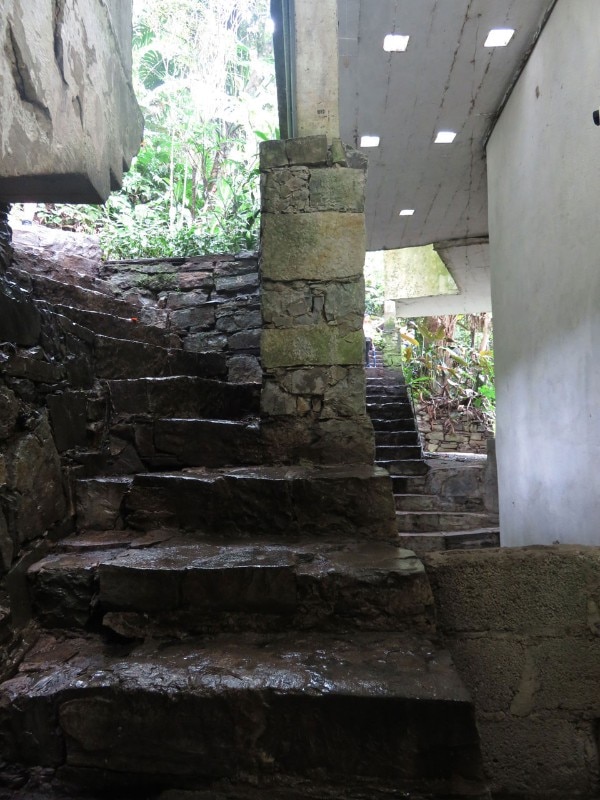
Las Pozas. A Surrealist sanctuary deep in the forest
Las Pozas originated in 1947 when Edward James purchased a coffee plantation near Xilitla, Mexico, and registered it in the name of Plutarco Gastelum, a close friend. For nearly 20 years it was home to his collection of orchids and numerous animal species including deer, ocelots, snakes, flamingos and parrots. Fascinated by Simon Rodia’s huge towers in Los Angeles, Edward James embarked on his architectural project in 1962, after a snowfall destroyed his botanic garden.
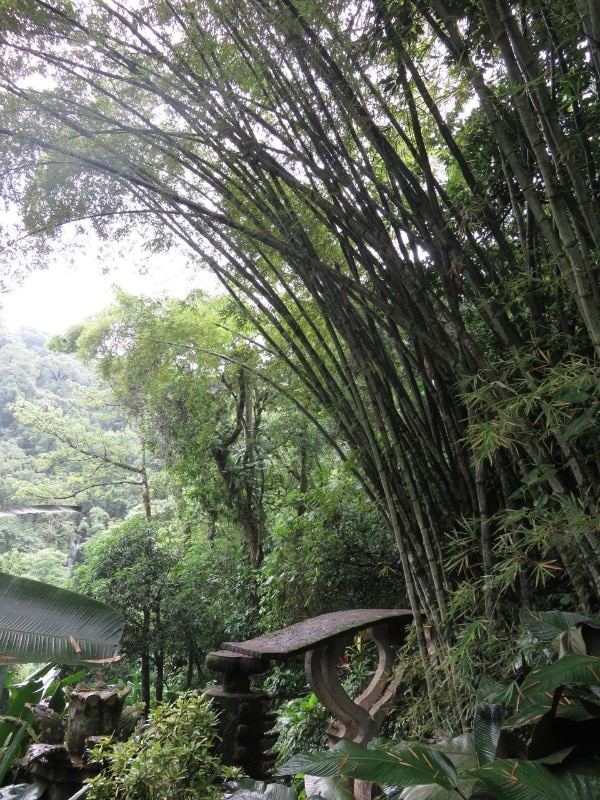
Las Pozas. A Surrealist sanctuary deep in the forest
Las Pozas originated in 1947 when Edward James purchased a coffee plantation near Xilitla, Mexico, and registered it in the name of Plutarco Gastelum, a close friend. For nearly 20 years it was home to his collection of orchids and numerous animal species including deer, ocelots, snakes, flamingos and parrots. Fascinated by Simon Rodia’s huge towers in Los Angeles, Edward James embarked on his architectural project in 1962, after a snowfall destroyed his botanic garden.
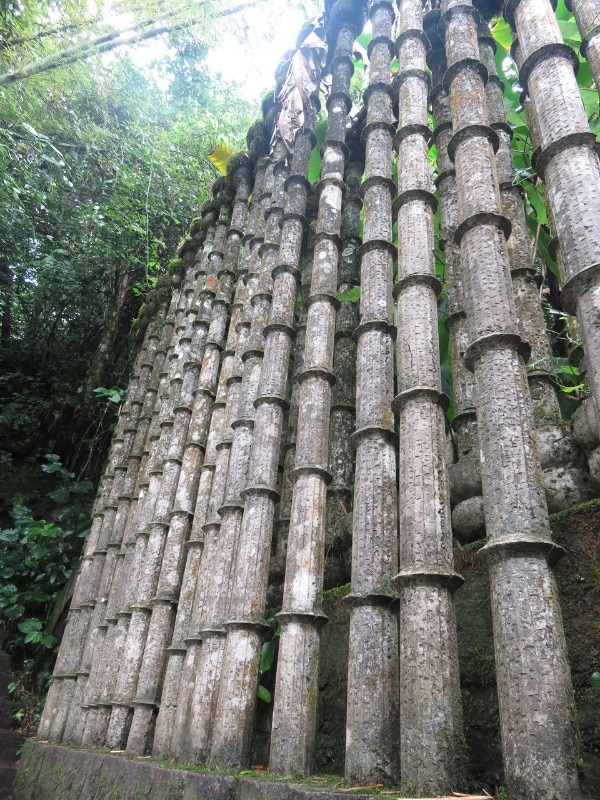
Las Pozas. A Surrealist sanctuary deep in the forest
Las Pozas originated in 1947 when Edward James purchased a coffee plantation near Xilitla, Mexico, and registered it in the name of Plutarco Gastelum, a close friend. For nearly 20 years it was home to his collection of orchids and numerous animal species including deer, ocelots, snakes, flamingos and parrots. Fascinated by Simon Rodia’s huge towers in Los Angeles, Edward James embarked on his architectural project in 1962, after a snowfall destroyed his botanic garden.
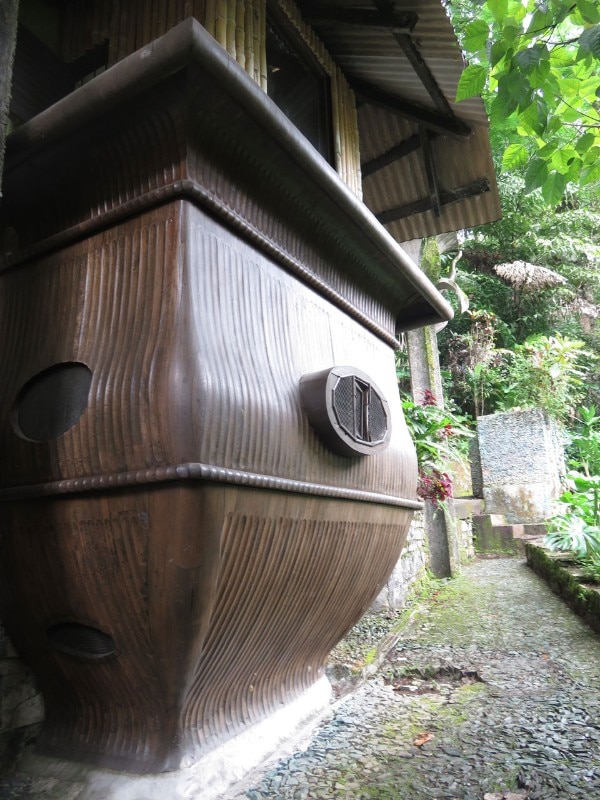
Las Pozas. A Surrealist sanctuary deep in the forest
Las Pozas originated in 1947 when Edward James purchased a coffee plantation near Xilitla, Mexico, and registered it in the name of Plutarco Gastelum, a close friend. For nearly 20 years it was home to his collection of orchids and numerous animal species including deer, ocelots, snakes, flamingos and parrots. Fascinated by Simon Rodia’s huge towers in Los Angeles, Edward James embarked on his architectural project in 1962, after a snowfall destroyed his botanic garden.
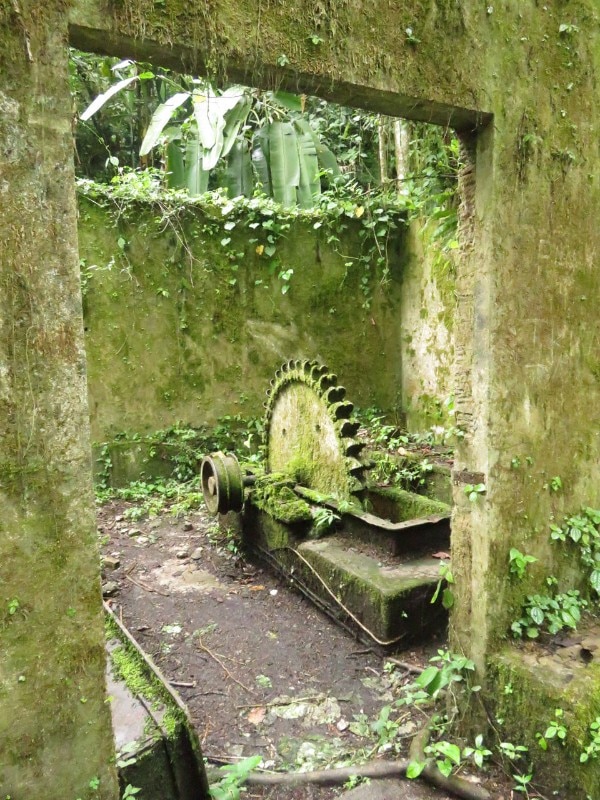
Las Pozas. A Surrealist sanctuary deep in the forest
Las Pozas originated in 1947 when Edward James purchased a coffee plantation near Xilitla, Mexico, and registered it in the name of Plutarco Gastelum, a close friend. For nearly 20 years it was home to his collection of orchids and numerous animal species including deer, ocelots, snakes, flamingos and parrots. Fascinated by Simon Rodia’s huge towers in Los Angeles, Edward James embarked on his architectural project in 1962, after a snowfall destroyed his botanic garden.

Las Pozas. A Surrealist sanctuary deep in the forest
Las Pozas originated in 1947 when Edward James purchased a coffee plantation near Xilitla, Mexico, and registered it in the name of Plutarco Gastelum, a close friend. For nearly 20 years it was home to his collection of orchids and numerous animal species including deer, ocelots, snakes, flamingos and parrots. Fascinated by Simon Rodia’s huge towers in Los Angeles, Edward James embarked on his architectural project in 1962, after a snowfall destroyed his botanic garden.

Las Pozas. A Surrealist sanctuary deep in the forest
Las Pozas originated in 1947 when Edward James purchased a coffee plantation near Xilitla, Mexico, and registered it in the name of Plutarco Gastelum, a close friend. For nearly 20 years it was home to his collection of orchids and numerous animal species including deer, ocelots, snakes, flamingos and parrots. Fascinated by Simon Rodia’s huge towers in Los Angeles, Edward James embarked on his architectural project in 1962, after a snowfall destroyed his botanic garden.

Las Pozas. A Surrealist sanctuary deep in the forest
Las Pozas originated in 1947 when Edward James purchased a coffee plantation near Xilitla, Mexico, and registered it in the name of Plutarco Gastelum, a close friend. For nearly 20 years it was home to his collection of orchids and numerous animal species including deer, ocelots, snakes, flamingos and parrots. Fascinated by Simon Rodia’s huge towers in Los Angeles, Edward James embarked on his architectural project in 1962, after a snowfall destroyed his botanic garden.

Las Pozas. A Surrealist sanctuary deep in the forest
Las Pozas originated in 1947 when Edward James purchased a coffee plantation near Xilitla, Mexico, and registered it in the name of Plutarco Gastelum, a close friend. For nearly 20 years it was home to his collection of orchids and numerous animal species including deer, ocelots, snakes, flamingos and parrots. Fascinated by Simon Rodia’s huge towers in Los Angeles, Edward James embarked on his architectural project in 1962, after a snowfall destroyed his botanic garden.

Las Pozas. A Surrealist sanctuary deep in the forest
Las Pozas originated in 1947 when Edward James purchased a coffee plantation near Xilitla, Mexico, and registered it in the name of Plutarco Gastelum, a close friend. For nearly 20 years it was home to his collection of orchids and numerous animal species including deer, ocelots, snakes, flamingos and parrots. Fascinated by Simon Rodia’s huge towers in Los Angeles, Edward James embarked on his architectural project in 1962, after a snowfall destroyed his botanic garden.

Las Pozas. A Surrealist sanctuary deep in the forest
Las Pozas originated in 1947 when Edward James purchased a coffee plantation near Xilitla, Mexico, and registered it in the name of Plutarco Gastelum, a close friend. For nearly 20 years it was home to his collection of orchids and numerous animal species including deer, ocelots, snakes, flamingos and parrots. Fascinated by Simon Rodia’s huge towers in Los Angeles, Edward James embarked on his architectural project in 1962, after a snowfall destroyed his botanic garden.

Las Pozas. A Surrealist sanctuary deep in the forest
Las Pozas originated in 1947 when Edward James purchased a coffee plantation near Xilitla, Mexico, and registered it in the name of Plutarco Gastelum, a close friend. For nearly 20 years it was home to his collection of orchids and numerous animal species including deer, ocelots, snakes, flamingos and parrots. Fascinated by Simon Rodia’s huge towers in Los Angeles, Edward James embarked on his architectural project in 1962, after a snowfall destroyed his botanic garden.

Las Pozas. A Surrealist sanctuary deep in the forest
Las Pozas originated in 1947 when Edward James purchased a coffee plantation near Xilitla, Mexico, and registered it in the name of Plutarco Gastelum, a close friend. For nearly 20 years it was home to his collection of orchids and numerous animal species including deer, ocelots, snakes, flamingos and parrots. Fascinated by Simon Rodia’s huge towers in Los Angeles, Edward James embarked on his architectural project in 1962, after a snowfall destroyed his botanic garden.

Las Pozas. A Surrealist sanctuary deep in the forest
Las Pozas originated in 1947 when Edward James purchased a coffee plantation near Xilitla, Mexico, and registered it in the name of Plutarco Gastelum, a close friend. For nearly 20 years it was home to his collection of orchids and numerous animal species including deer, ocelots, snakes, flamingos and parrots. Fascinated by Simon Rodia’s huge towers in Los Angeles, Edward James embarked on his architectural project in 1962, after a snowfall destroyed his botanic garden.

Las Pozas. A Surrealist sanctuary deep in the forest
Las Pozas originated in 1947 when Edward James purchased a coffee plantation near Xilitla, Mexico, and registered it in the name of Plutarco Gastelum, a close friend. For nearly 20 years it was home to his collection of orchids and numerous animal species including deer, ocelots, snakes, flamingos and parrots. Fascinated by Simon Rodia’s huge towers in Los Angeles, Edward James embarked on his architectural project in 1962, after a snowfall destroyed his botanic garden.

Las Pozas. A Surrealist sanctuary deep in the forest
Las Pozas originated in 1947 when Edward James purchased a coffee plantation near Xilitla, Mexico, and registered it in the name of Plutarco Gastelum, a close friend. For nearly 20 years it was home to his collection of orchids and numerous animal species including deer, ocelots, snakes, flamingos and parrots. Fascinated by Simon Rodia’s huge towers in Los Angeles, Edward James embarked on his architectural project in 1962, after a snowfall destroyed his botanic garden.

Las Pozas. A Surrealist sanctuary deep in the forest
Las Pozas originated in 1947 when Edward James purchased a coffee plantation near Xilitla, Mexico, and registered it in the name of Plutarco Gastelum, a close friend. For nearly 20 years it was home to his collection of orchids and numerous animal species including deer, ocelots, snakes, flamingos and parrots. Fascinated by Simon Rodia’s huge towers in Los Angeles, Edward James embarked on his architectural project in 1962, after a snowfall destroyed his botanic garden.

Las Pozas. A Surrealist sanctuary deep in the forest
Las Pozas originated in 1947 when Edward James purchased a coffee plantation near Xilitla, Mexico, and registered it in the name of Plutarco Gastelum, a close friend. For nearly 20 years it was home to his collection of orchids and numerous animal species including deer, ocelots, snakes, flamingos and parrots. Fascinated by Simon Rodia’s huge towers in Los Angeles, Edward James embarked on his architectural project in 1962, after a snowfall destroyed his botanic garden.

Las Pozas. A Surrealist sanctuary deep in the forest
Las Pozas originated in 1947 when Edward James purchased a coffee plantation near Xilitla, Mexico, and registered it in the name of Plutarco Gastelum, a close friend. For nearly 20 years it was home to his collection of orchids and numerous animal species including deer, ocelots, snakes, flamingos and parrots. Fascinated by Simon Rodia’s huge towers in Los Angeles, Edward James embarked on his architectural project in 1962, after a snowfall destroyed his botanic garden.

Las Pozas. A Surrealist sanctuary deep in the forest
Las Pozas originated in 1947 when Edward James purchased a coffee plantation near Xilitla, Mexico, and registered it in the name of Plutarco Gastelum, a close friend. For nearly 20 years it was home to his collection of orchids and numerous animal species including deer, ocelots, snakes, flamingos and parrots. Fascinated by Simon Rodia’s huge towers in Los Angeles, Edward James embarked on his architectural project in 1962, after a snowfall destroyed his botanic garden.

Las Pozas. A Surrealist sanctuary deep in the forest
Las Pozas originated in 1947 when Edward James purchased a coffee plantation near Xilitla, Mexico, and registered it in the name of Plutarco Gastelum, a close friend. For nearly 20 years it was home to his collection of orchids and numerous animal species including deer, ocelots, snakes, flamingos and parrots. Fascinated by Simon Rodia’s huge towers in Los Angeles, Edward James embarked on his architectural project in 1962, after a snowfall destroyed his botanic garden.

Las Pozas. A Surrealist sanctuary deep in the forest
Las Pozas originated in 1947 when Edward James purchased a coffee plantation near Xilitla, Mexico, and registered it in the name of Plutarco Gastelum, a close friend. For nearly 20 years it was home to his collection of orchids and numerous animal species including deer, ocelots, snakes, flamingos and parrots. Fascinated by Simon Rodia’s huge towers in Los Angeles, Edward James embarked on his architectural project in 1962, after a snowfall destroyed his botanic garden.

Las Pozas. A Surrealist sanctuary deep in the forest
Las Pozas originated in 1947 when Edward James purchased a coffee plantation near Xilitla, Mexico, and registered it in the name of Plutarco Gastelum, a close friend. For nearly 20 years it was home to his collection of orchids and numerous animal species including deer, ocelots, snakes, flamingos and parrots. Fascinated by Simon Rodia’s huge towers in Los Angeles, Edward James embarked on his architectural project in 1962, after a snowfall destroyed his botanic garden.

Las Pozas. A Surrealist sanctuary deep in the forest
Las Pozas originated in 1947 when Edward James purchased a coffee plantation near Xilitla, Mexico, and registered it in the name of Plutarco Gastelum, a close friend. For nearly 20 years it was home to his collection of orchids and numerous animal species including deer, ocelots, snakes, flamingos and parrots. Fascinated by Simon Rodia’s huge towers in Los Angeles, Edward James embarked on his architectural project in 1962, after a snowfall destroyed his botanic garden.

Las Pozas. A Surrealist sanctuary deep in the forest
Las Pozas originated in 1947 when Edward James purchased a coffee plantation near Xilitla, Mexico, and registered it in the name of Plutarco Gastelum, a close friend. For nearly 20 years it was home to his collection of orchids and numerous animal species including deer, ocelots, snakes, flamingos and parrots. Fascinated by Simon Rodia’s huge towers in Los Angeles, Edward James embarked on his architectural project in 1962, after a snowfall destroyed his botanic garden.

Las Pozas. A Surrealist sanctuary deep in the forest
Las Pozas originated in 1947 when Edward James purchased a coffee plantation near Xilitla, Mexico, and registered it in the name of Plutarco Gastelum, a close friend. For nearly 20 years it was home to his collection of orchids and numerous animal species including deer, ocelots, snakes, flamingos and parrots. Fascinated by Simon Rodia’s huge towers in Los Angeles, Edward James embarked on his architectural project in 1962, after a snowfall destroyed his botanic garden.

Las Pozas. A Surrealist sanctuary deep in the forest
Las Pozas originated in 1947 when Edward James purchased a coffee plantation near Xilitla, Mexico, and registered it in the name of Plutarco Gastelum, a close friend. For nearly 20 years it was home to his collection of orchids and numerous animal species including deer, ocelots, snakes, flamingos and parrots. Fascinated by Simon Rodia’s huge towers in Los Angeles, Edward James embarked on his architectural project in 1962, after a snowfall destroyed his botanic garden.

Las Pozas. A Surrealist sanctuary deep in the forest
Las Pozas originated in 1947 when Edward James purchased a coffee plantation near Xilitla, Mexico, and registered it in the name of Plutarco Gastelum, a close friend. For nearly 20 years it was home to his collection of orchids and numerous animal species including deer, ocelots, snakes, flamingos and parrots. Fascinated by Simon Rodia’s huge towers in Los Angeles, Edward James embarked on his architectural project in 1962, after a snowfall destroyed his botanic garden.

Las Pozas. A Surrealist sanctuary deep in the forest
Las Pozas originated in 1947 when Edward James purchased a coffee plantation near Xilitla, Mexico, and registered it in the name of Plutarco Gastelum, a close friend. For nearly 20 years it was home to his collection of orchids and numerous animal species including deer, ocelots, snakes, flamingos and parrots. Fascinated by Simon Rodia’s huge towers in Los Angeles, Edward James embarked on his architectural project in 1962, after a snowfall destroyed his botanic garden.

Las Pozas. A Surrealist sanctuary deep in the forest
Las Pozas originated in 1947 when Edward James purchased a coffee plantation near Xilitla, Mexico, and registered it in the name of Plutarco Gastelum, a close friend. For nearly 20 years it was home to his collection of orchids and numerous animal species including deer, ocelots, snakes, flamingos and parrots. Fascinated by Simon Rodia’s huge towers in Los Angeles, Edward James embarked on his architectural project in 1962, after a snowfall destroyed his botanic garden.

Las Pozas. A Surrealist sanctuary deep in the forest
Las Pozas originated in 1947 when Edward James purchased a coffee plantation near Xilitla, Mexico, and registered it in the name of Plutarco Gastelum, a close friend. For nearly 20 years it was home to his collection of orchids and numerous animal species including deer, ocelots, snakes, flamingos and parrots. Fascinated by Simon Rodia’s huge towers in Los Angeles, Edward James embarked on his architectural project in 1962, after a snowfall destroyed his botanic garden.

Las Pozas. A Surrealist sanctuary deep in the forest
Las Pozas originated in 1947 when Edward James purchased a coffee plantation near Xilitla, Mexico, and registered it in the name of Plutarco Gastelum, a close friend. For nearly 20 years it was home to his collection of orchids and numerous animal species including deer, ocelots, snakes, flamingos and parrots. Fascinated by Simon Rodia’s huge towers in Los Angeles, Edward James embarked on his architectural project in 1962, after a snowfall destroyed his botanic garden.
Born in Sussex in 1907, Sir Edward James, a wealthy heir and tireless art patron, was one of the great eccentrics of his day. He came from an upper-middle-class family and studied at Eton and Oxford, where he became acquainted with great authors and artists of the late 1920s such as Magritte, Picasso, De Chirico, Ernst, Delvaux, Leonora Carrington, Tchelitchew, Brecht, George Balanchine and John Betjeman, to mention but a few.
Salvador Dalí was his protégé in 1938 and with him conceived famous works such as the Mae West Lips Sofa and Lobster Telephone. James, who had his dog’s footprints woven into the carpet of his West Dean villa, was the world’s greatest private collector of Surrealist artworks. He even called himself a Surrealist.
When I was a child I used to have the most extraordinary Surrealist fantasies. I think (…) my fantasy was developed so intensely was that I was forced to rest (...) when I should have been allowed to run around in the garden
After his marriage to Austrian dancer Tilly Losch ended, he said farewell to Europe’s cultural salons and started a new life in America. After Los Angeles, where he was introduced to mysticism, Hollywood and Simon Rodia’s monumental Watts Towers, he dedicated himself to “gardening” in Mexico.
He made friends with a local guide, Plutarco Gastelum, and with him explored the country far and wide until he found Xilitla. There, he commenced his most daring project: Las Pozas, a Surrealist garden set deep in the forest, a maze of suspended walkways and terraces, steps, natural pools and waterfalls, and an architectural reverie of arches, spires, vaults and sculptures blending perfectly into the natural landscape.

 View gallery
View gallery
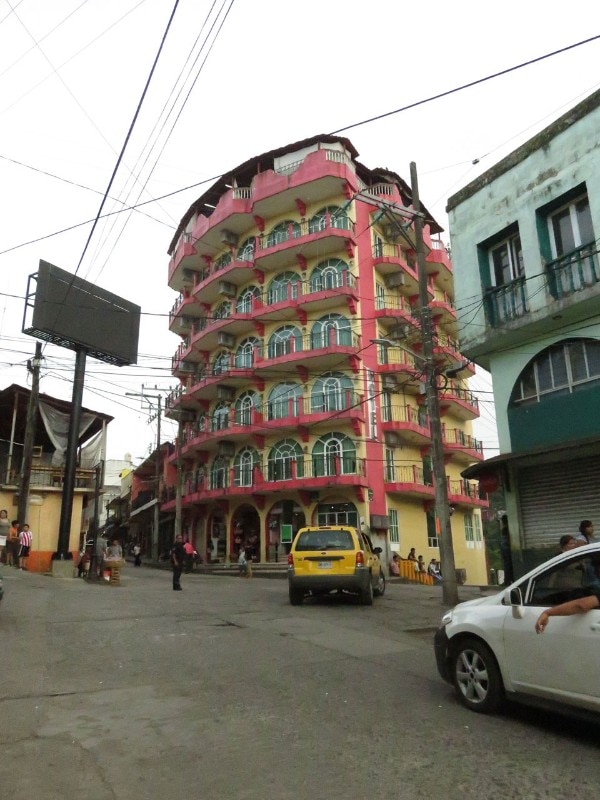
Las Pozas. A Surrealist sanctuary deep in the forest
Everything in Xilitla seems left unfinished. The houses follow no
logical pattern, baffling the European visitor. James’s mark is strong and the aesthetics are welded to his spirit, forget the architecture.
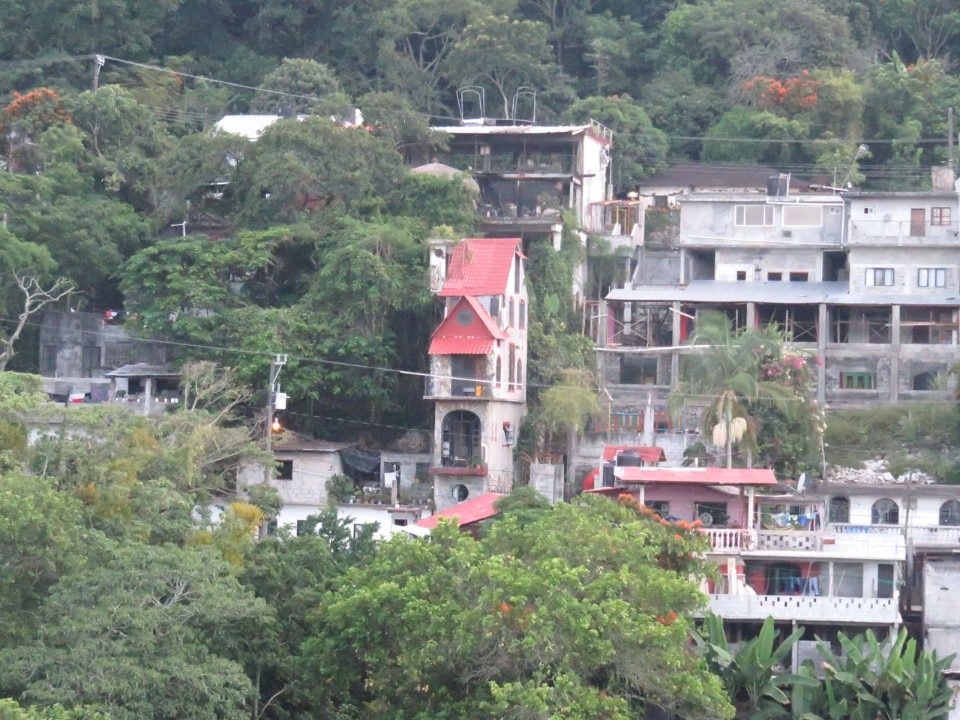
Las Pozas. A Surrealist sanctuary deep in the forest
Everything in Xilitla seems left unfinished. The houses follow no logical pattern, baffling the European visitor. James’s mark is strong and the aesthetics are welded to his spirit, forget the architecture.

Las Pozas. A Surrealist sanctuary deep in the forest
Everything in Xilitla seems left unfinished. The houses follow no logical pattern, baffling the European visitor. James’s mark is strong and the aesthetics are welded to his spirit, forget the architecture.
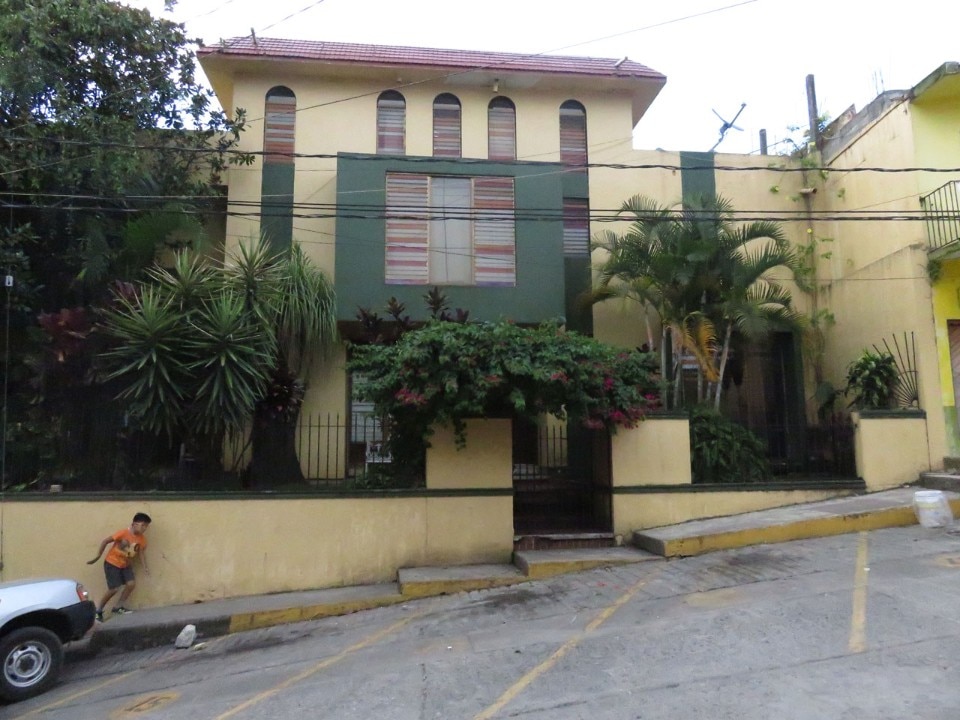
Las Pozas. A Surrealist sanctuary deep in the forest
Everything in Xilitla seems left unfinished. The houses follow no logical pattern, baffling the European visitor. James’s mark is strong and the aesthetics are welded to his spirit, forget the architecture.
Edward James and Plutarco Gastelum, El Castillo, Xilitla
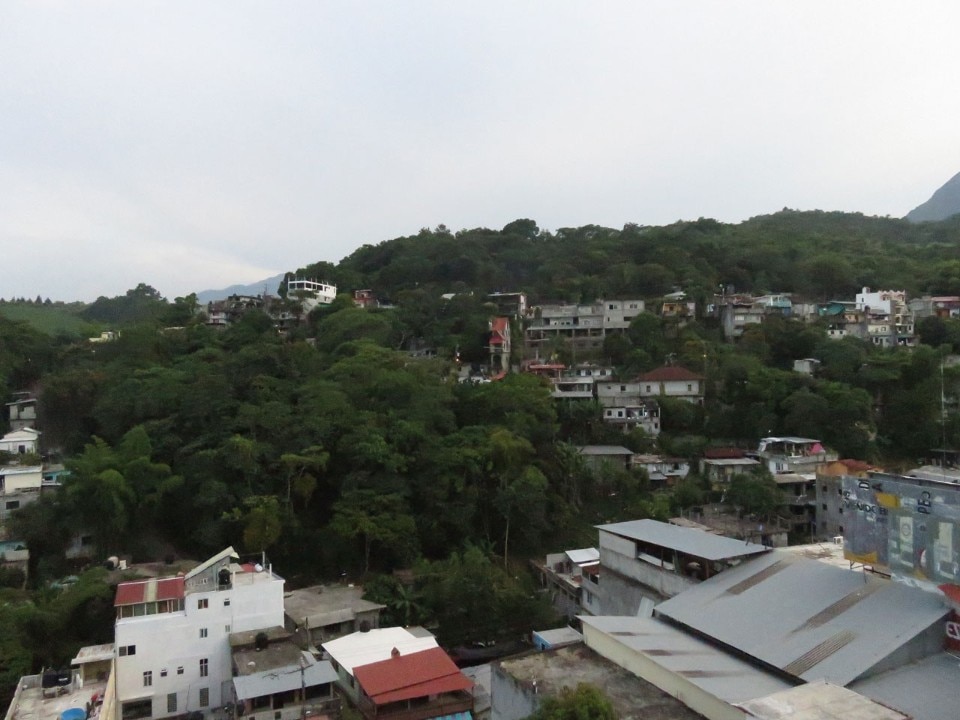
Las Pozas. A Surrealist sanctuary deep in the forest
Everything in Xilitla seems left unfinished. The houses follow no logical pattern, baffling the European visitor. James’s mark is strong and the aesthetics are welded to his spirit, forget the architecture.
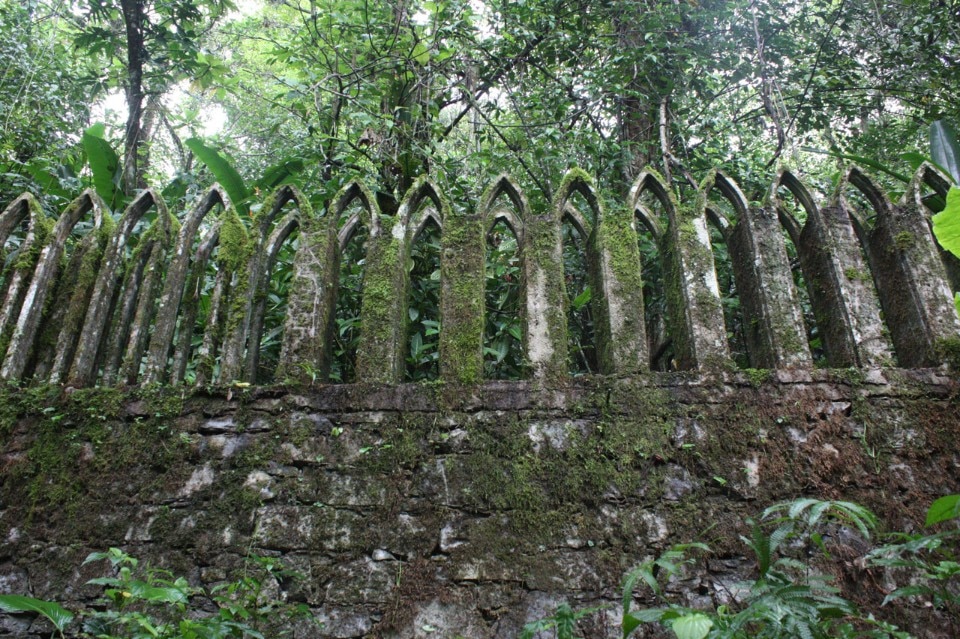
Las Pozas. A Surrealist sanctuary deep in the forest
Edward James auctioned off his painting collection to build Las Pozas, funding the project with what would today be a fivemillion-dollar budget. The project involved 40 workers and consists in 36 structures scattered across 32 hectares. The building process stopped in 1984, year of his death.
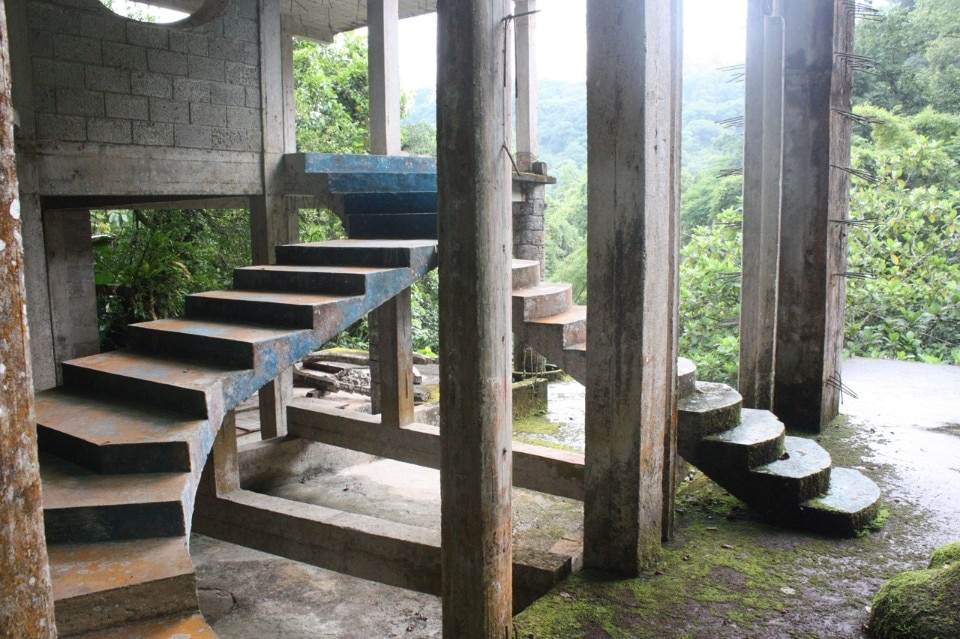
Las Pozas. A Surrealist sanctuary deep in the forest
Edward James auctioned off his painting collection to build Las Pozas, funding the project with what would today be a fivemillion-dollar budget. The project involved 40 workers and consists in 36 structures scattered across 32 hectares. The building process stopped in 1984, year of his death.
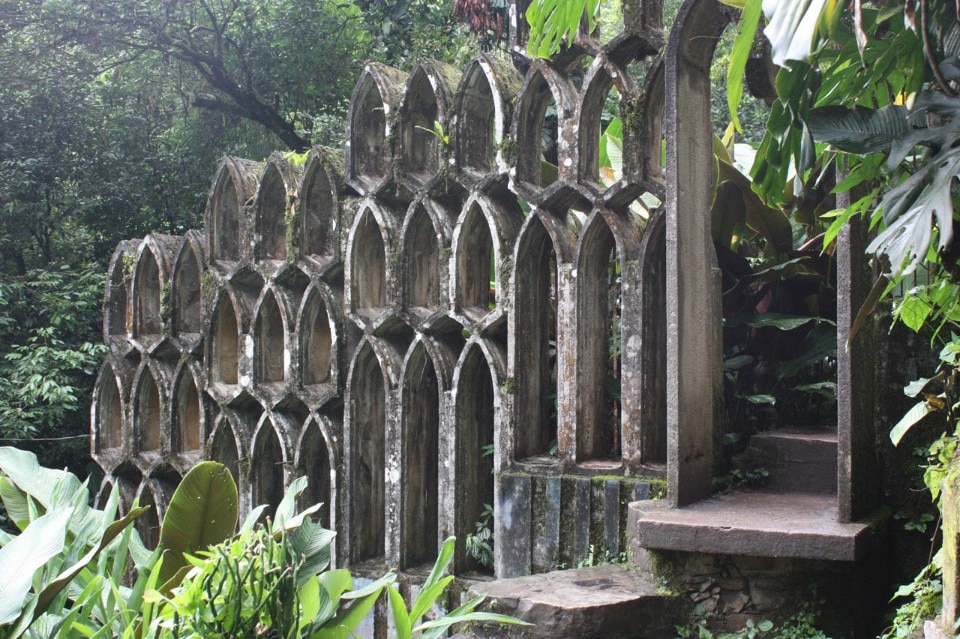
Las Pozas. A Surrealist sanctuary deep in the forest
Edward James auctioned off his painting collection to build Las Pozas, funding the project with what would today be a fivemillion-dollar budget. The project involved 40 workers and consists in 36 structures scattered across 32 hectares. The building process stopped in 1984, year of his death.
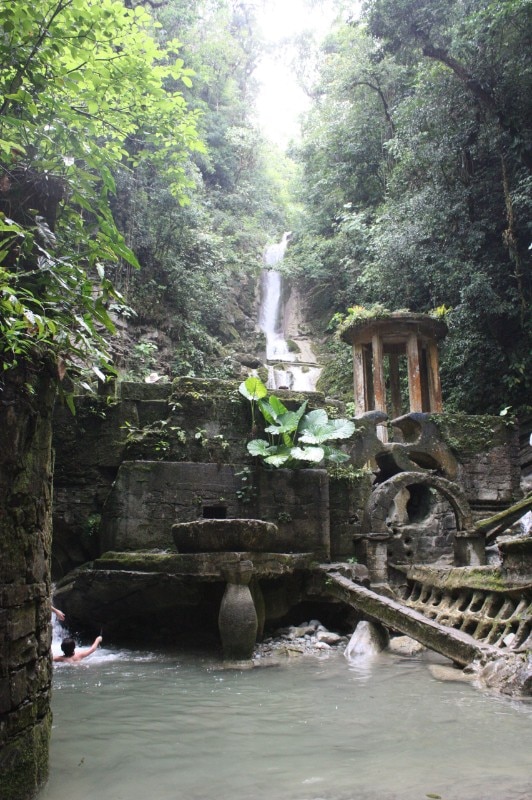
Las Pozas. A Surrealist sanctuary deep in the forest
Edward James auctioned off his painting collection to build Las Pozas, funding the project with what would today be a fivemillion-dollar budget. The project involved 40 workers and consists in 36 structures scattered across 32 hectares. The building process stopped in 1984, year of his death.
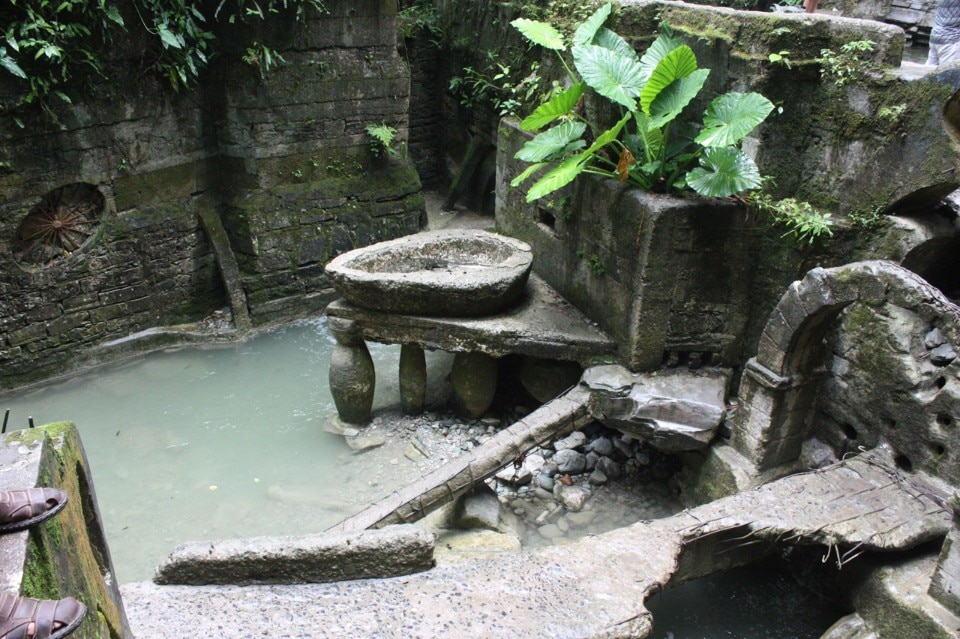
Las Pozas. A Surrealist sanctuary deep in the forest
Edward James auctioned off his painting collection to build Las Pozas, funding the project with what would today be a fivemillion-dollar budget. The project involved 40 workers and consists in 36 structures scattered across 32 hectares. The building process stopped in 1984, year of his death.
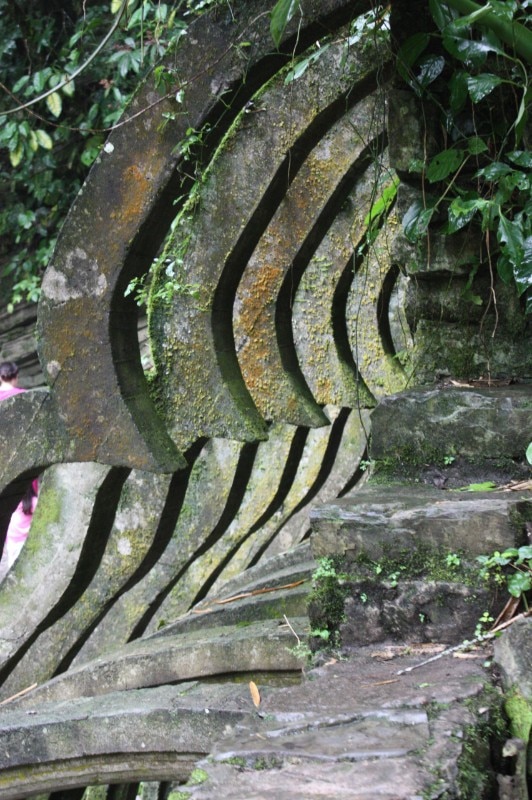
Las Pozas. A Surrealist sanctuary deep in the forest
Edward James auctioned off his painting collection to build Las Pozas, funding the project with what would today be a fivemillion-dollar budget. The project involved 40 workers and consists in 36 structures scattered across 32 hectares. The building process stopped in 1984, year of his death.
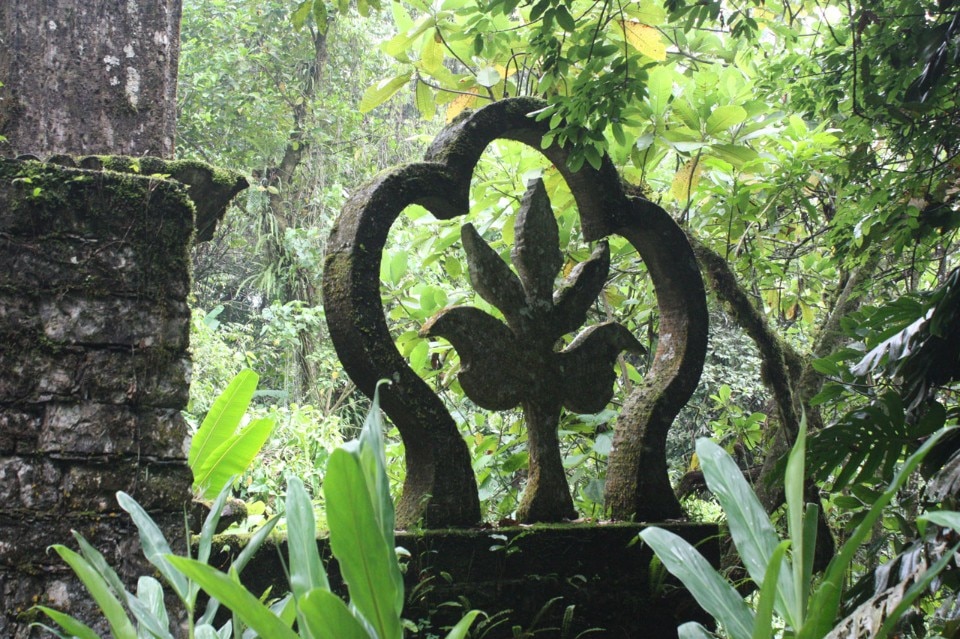
Las Pozas. A Surrealist sanctuary deep in the forest
Edward James auctioned off his painting collection to build Las Pozas, funding the project with what would today be a fivemillion-dollar budget. The project involved 40 workers and consists in 36 structures scattered across 32 hectares. The building process stopped in 1984, year of his death.
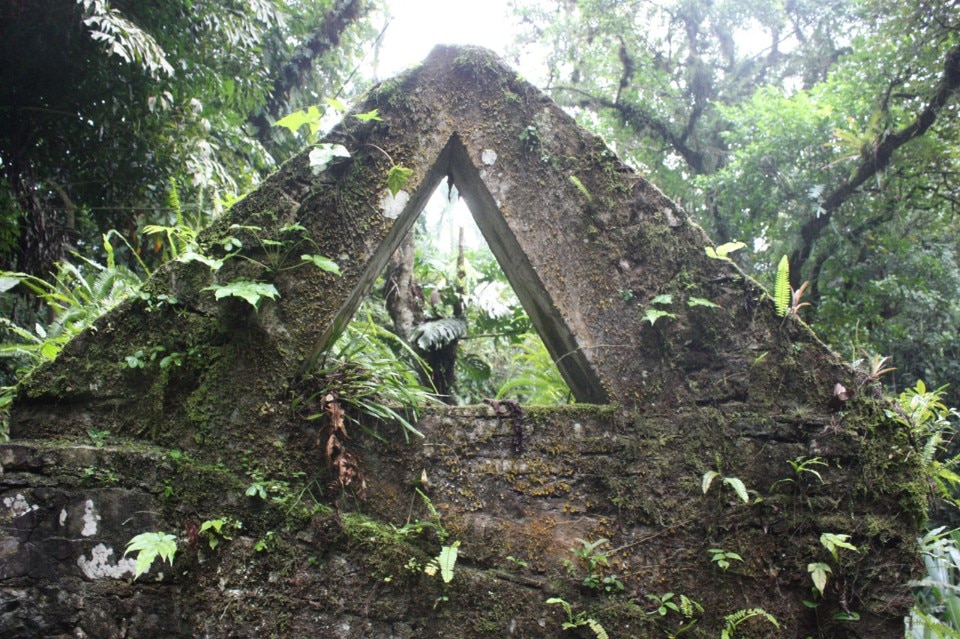
Las Pozas. A Surrealist sanctuary deep in the forest
Edward James auctioned off his painting collection to build Las Pozas, funding the project with what would today be a fivemillion-dollar budget. The project involved 40 workers and consists in 36 structures scattered across 32 hectares. The building process stopped in 1984, year of his death.
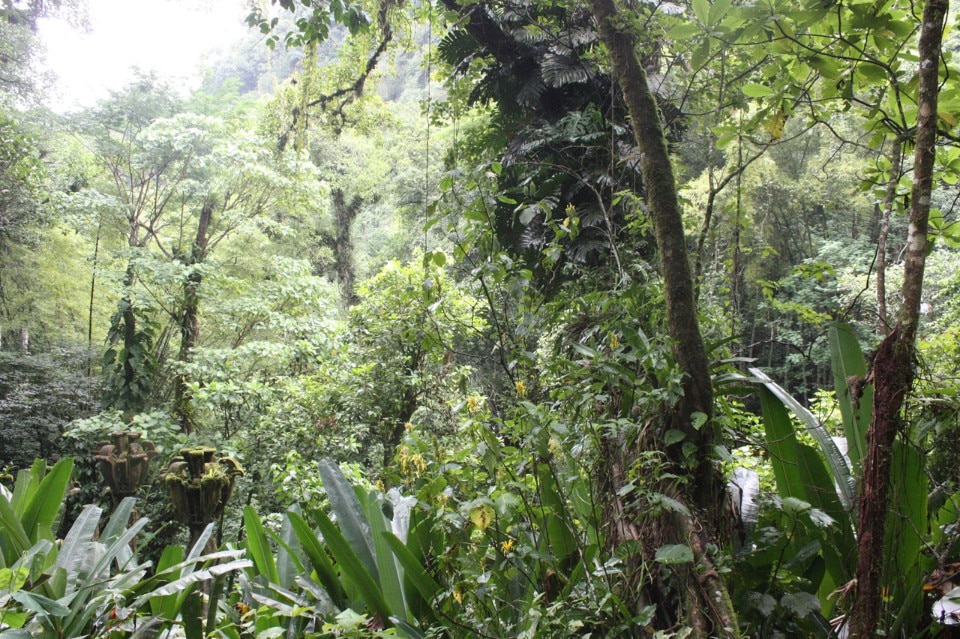
Las Pozas. A Surrealist sanctuary deep in the forest
Edward James auctioned off his painting collection to build Las Pozas, funding the project with what would today be a fivemillion-dollar budget. The project involved 40 workers and consists in 36 structures scattered across 32 hectares. The building process stopped in 1984, year of his death.
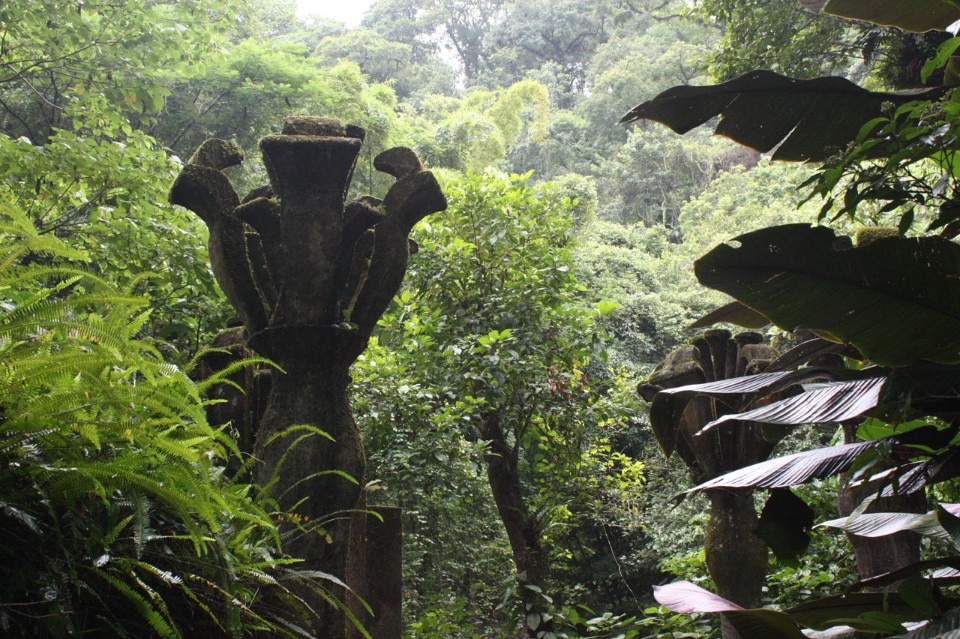
Las Pozas. A Surrealist sanctuary deep in the forest
Edward James auctioned off his painting collection to build Las Pozas, funding the project with what would today be a fivemillion-dollar budget. The project involved 40 workers and consists in 36 structures scattered across 32 hectares. The building process stopped in 1984, year of his death.

Las Pozas. A Surrealist sanctuary deep in the forest
Edward James auctioned off his painting collection to build Las Pozas, funding the project with what would today be a fivemillion-dollar budget. The project involved 40 workers and consists in 36 structures scattered across 32 hectares. The building process stopped in 1984, year of his death.
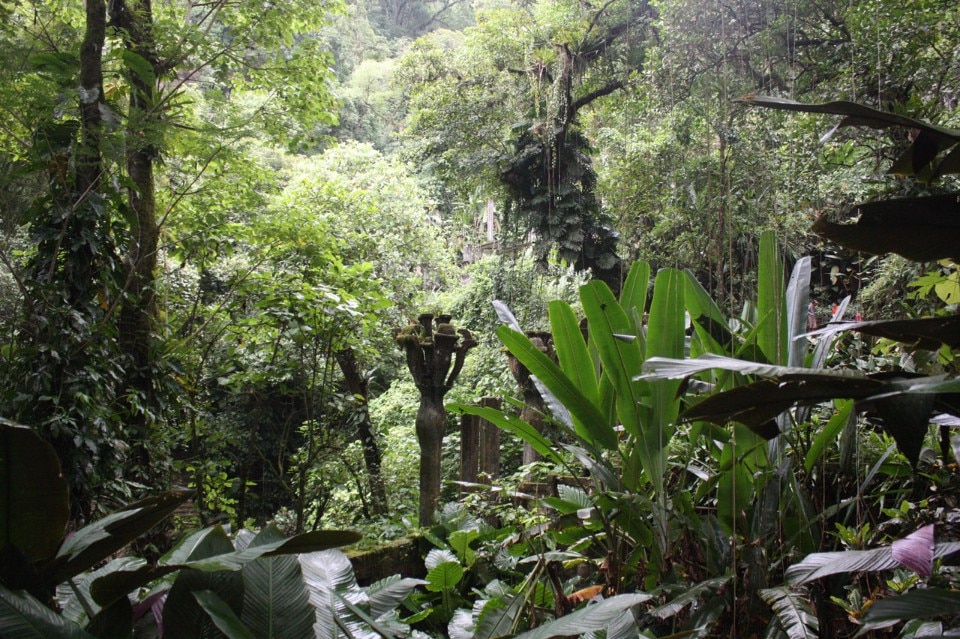
Las Pozas. A Surrealist sanctuary deep in the forest
Edward James auctioned off his painting collection to build Las Pozas, funding the project with what would today be a fivemillion-dollar budget. The project involved 40 workers and consists in 36 structures scattered across 32 hectares. The building process stopped in 1984, year of his death.
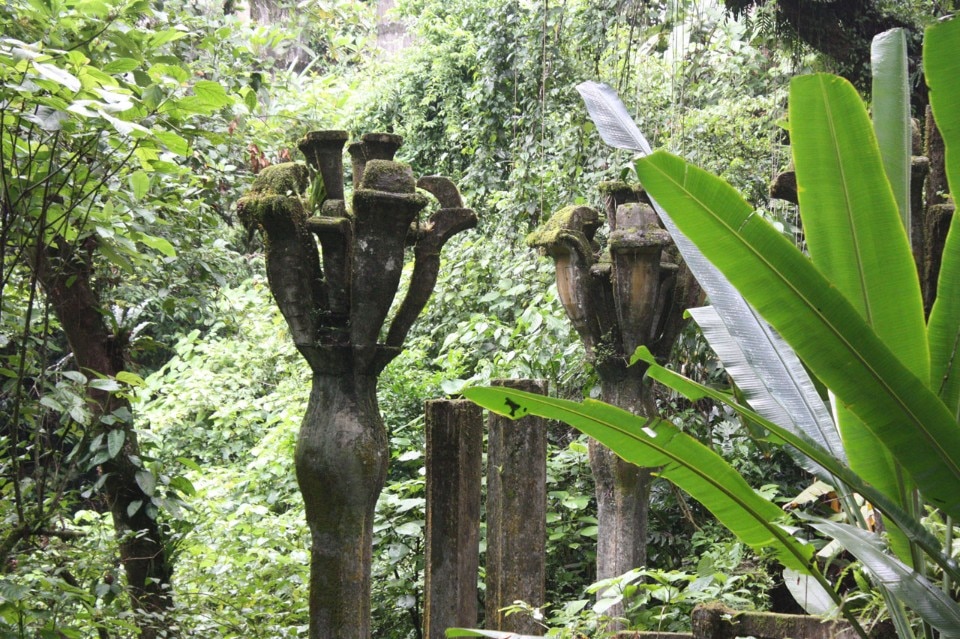
Las Pozas. A Surrealist sanctuary deep in the forest
Edward James auctioned off his painting collection to build Las Pozas, funding the project with what would today be a fivemillion-dollar budget. The project involved 40 workers and consists in 36 structures scattered across 32 hectares. The building process stopped in 1984, year of his death.
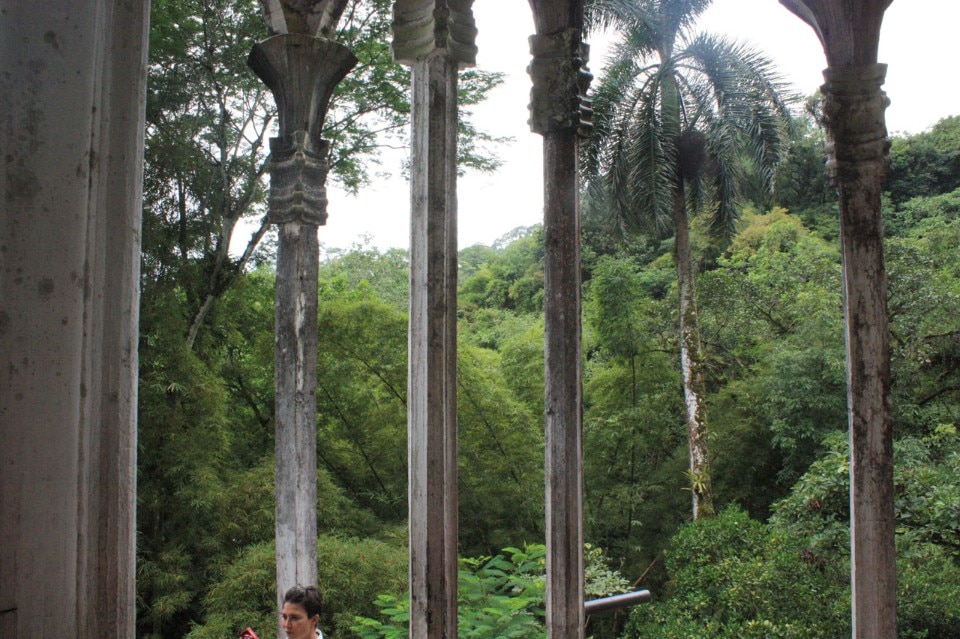
Las Pozas. A Surrealist sanctuary deep in the forest
Edward James auctioned off his painting collection to build Las Pozas, funding the project with what would today be a fivemillion-dollar budget. The project involved 40 workers and consists in 36 structures scattered across 32 hectares. The building process stopped in 1984, year of his death.
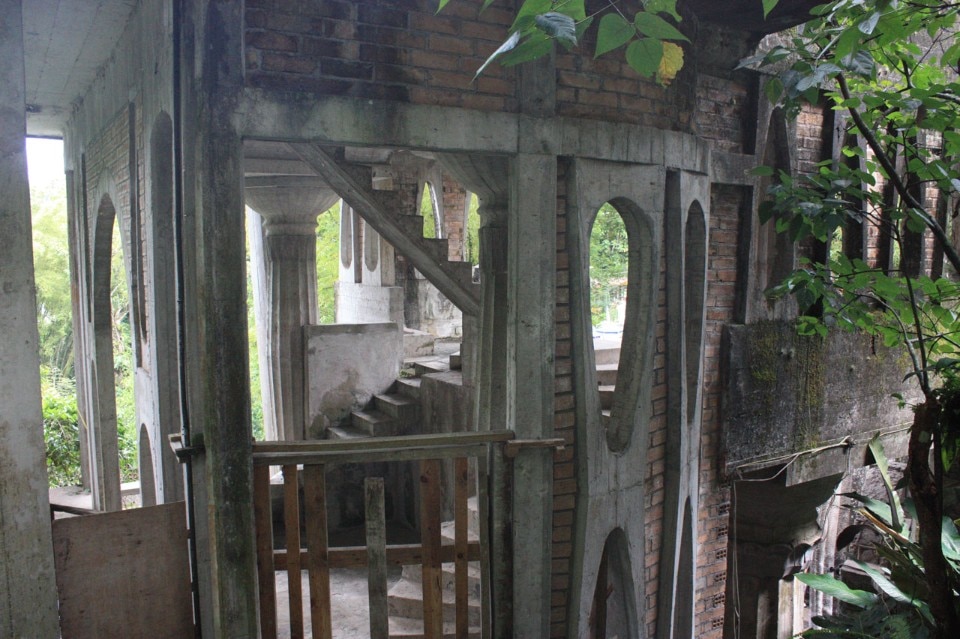
Las Pozas. A Surrealist sanctuary deep in the forest
Edward James auctioned off his painting collection to build Las Pozas, funding the project with what would today be a fivemillion-dollar budget. The project involved 40 workers and consists in 36 structures scattered across 32 hectares. The building process stopped in 1984, year of his death.
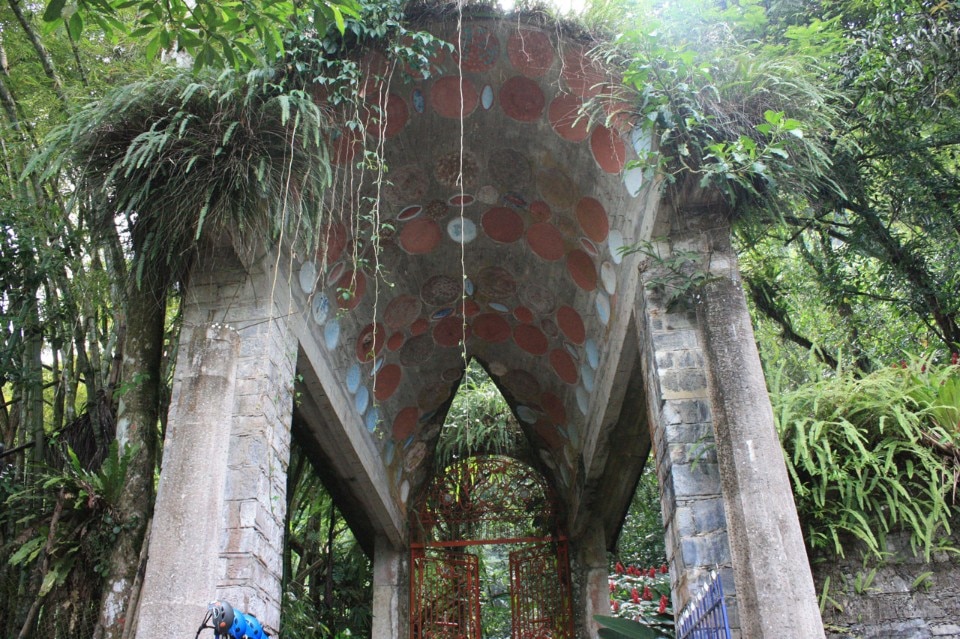
Las Pozas. A Surrealist sanctuary deep in the forest
Edward James auctioned off his painting collection to build Las Pozas, funding the project with what would today be a fivemillion-dollar budget. The project involved 40 workers and consists in 36 structures scattered across 32 hectares. The building process stopped in 1984, year of his death.
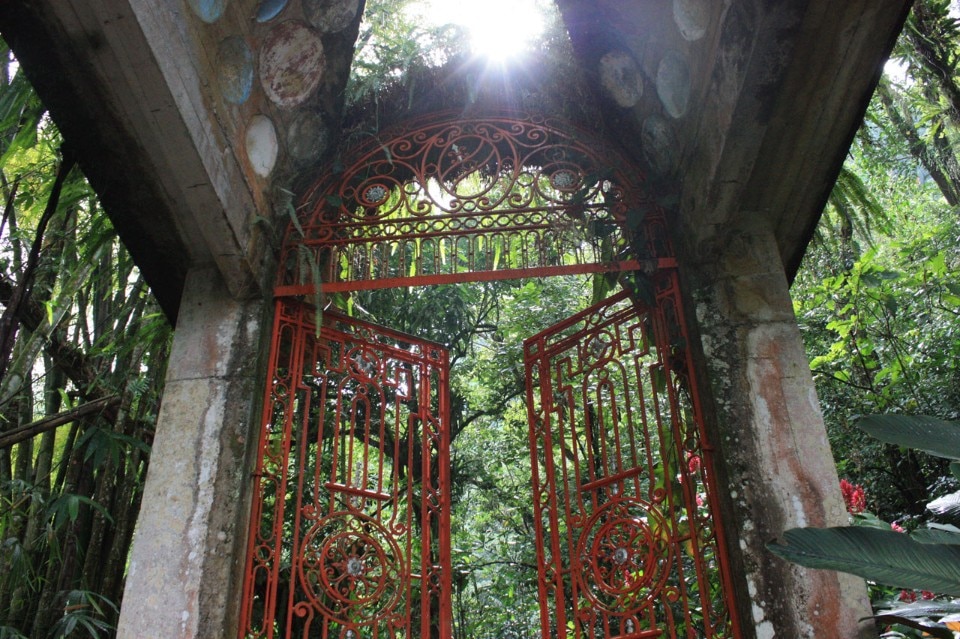
Las Pozas. A Surrealist sanctuary deep in the forest
Edward James auctioned off his painting collection to build Las Pozas, funding the project with what would today be a fivemillion-dollar budget. The project involved 40 workers and consists in 36 structures scattered across 32 hectares. The building process stopped in 1984, year of his death.
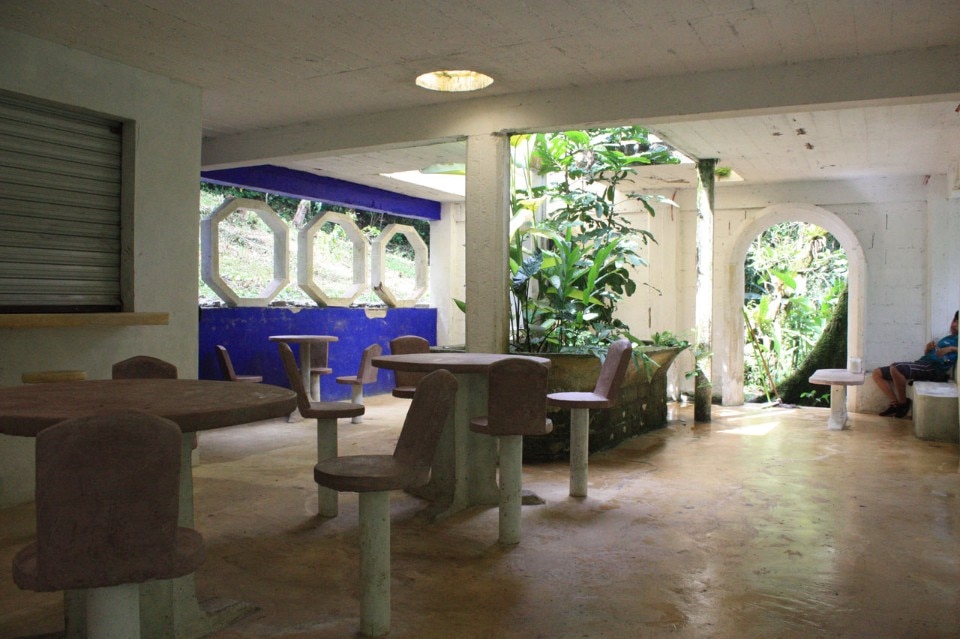
Las Pozas. A Surrealist sanctuary deep in the forest
Edward James auctioned off his painting collection to build Las Pozas, funding the project with what would today be a fivemillion-dollar budget. The project involved 40 workers and consists in 36 structures scattered across 32 hectares. The building process stopped in 1984, year of his death.
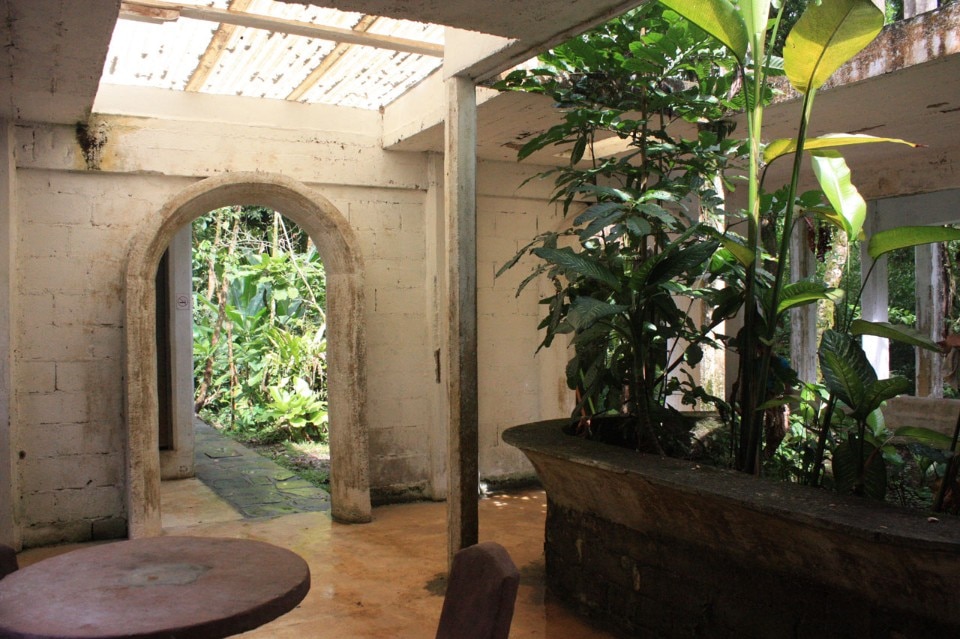
Las Pozas. A Surrealist sanctuary deep in the forest
Edward James auctioned off his painting collection to build Las Pozas, funding the project with what would today be a fivemillion-dollar budget. The project involved 40 workers and consists in 36 structures scattered across 32 hectares. The building process stopped in 1984, year of his death.
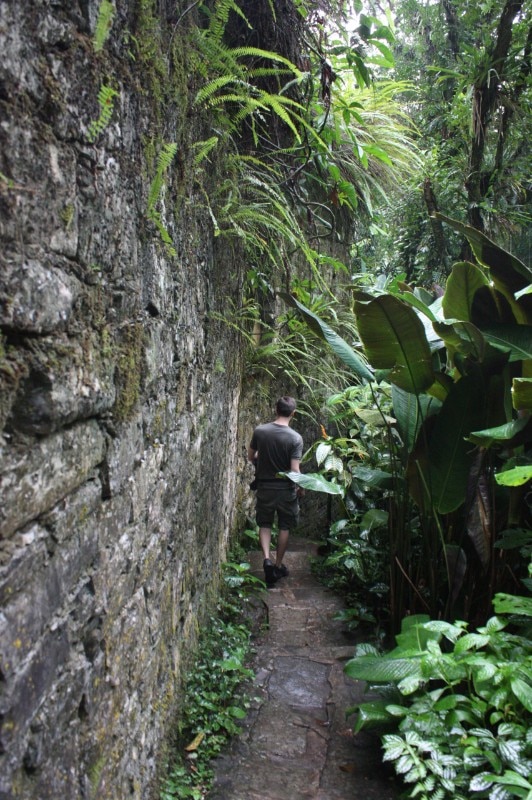
Las Pozas. A Surrealist sanctuary deep in the forest
Edward James auctioned off his painting collection to build Las Pozas, funding the project with what would today be a fivemillion-dollar budget. The project involved 40 workers and consists in 36 structures scattered across 32 hectares. The building process stopped in 1984, year of his death.
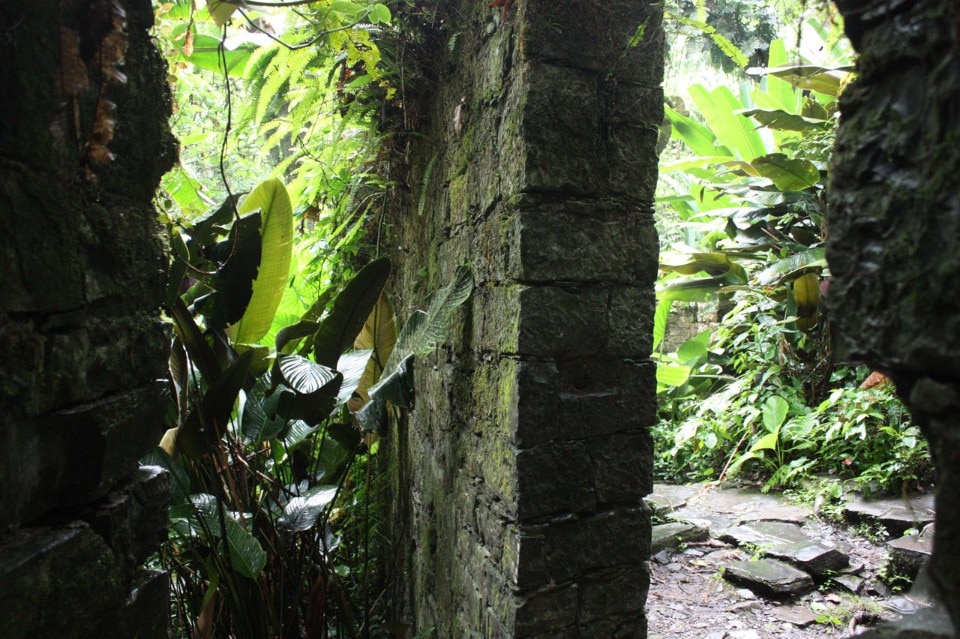
Las Pozas. A Surrealist sanctuary deep in the forest
Edward James auctioned off his painting collection to build Las Pozas, funding the project with what would today be a fivemillion-dollar budget. The project involved 40 workers and consists in 36 structures scattered across 32 hectares. The building process stopped in 1984, year of his death.
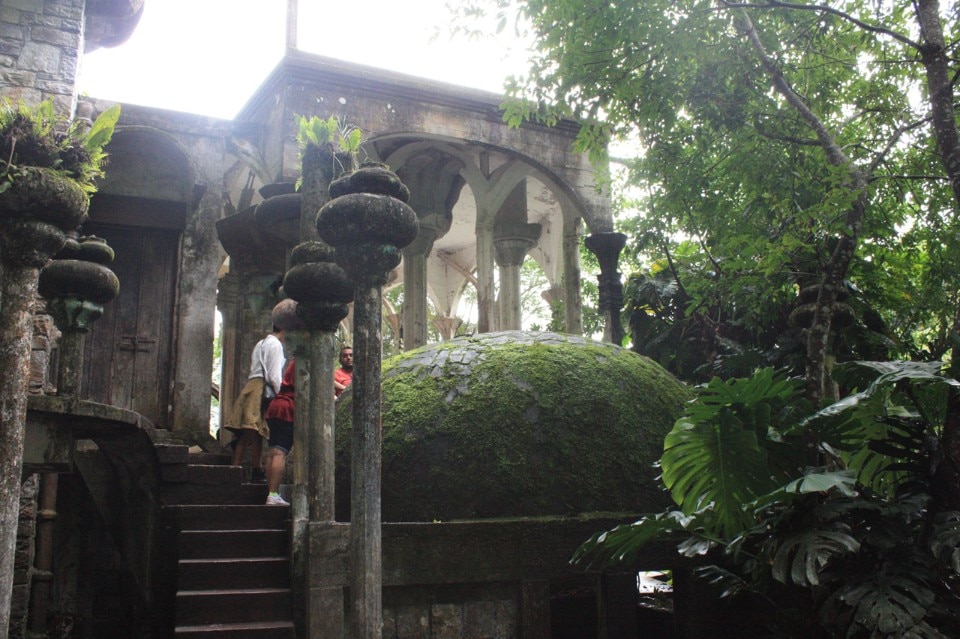
Las Pozas. A Surrealist sanctuary deep in the forest
Edward James auctioned off his painting collection to build Las Pozas, funding the project with what would today be a fivemillion-dollar budget. The project involved 40 workers and consists in 36 structures scattered across 32 hectares. The building process stopped in 1984, year of his death.
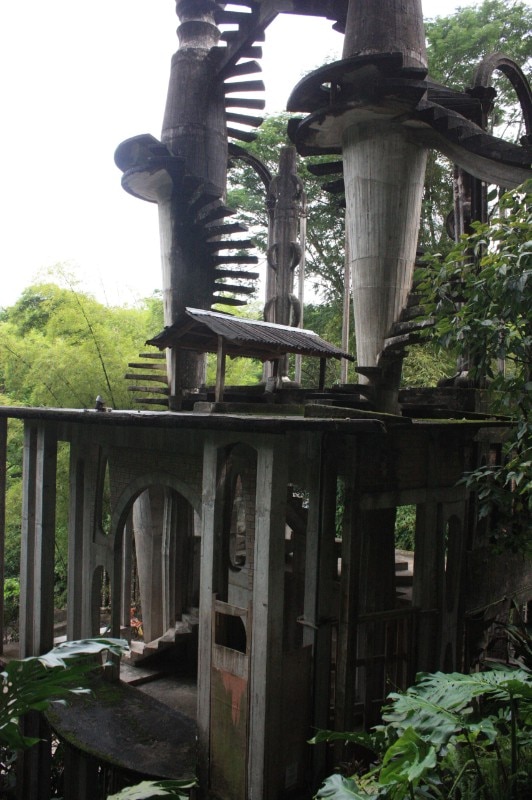
Las Pozas. A Surrealist sanctuary deep in the forest
Edward James auctioned off his painting collection to build Las Pozas, funding the project with what would today be a fivemillion-dollar budget. The project involved 40 workers and consists in 36 structures scattered across 32 hectares. The building process stopped in 1984, year of his death.
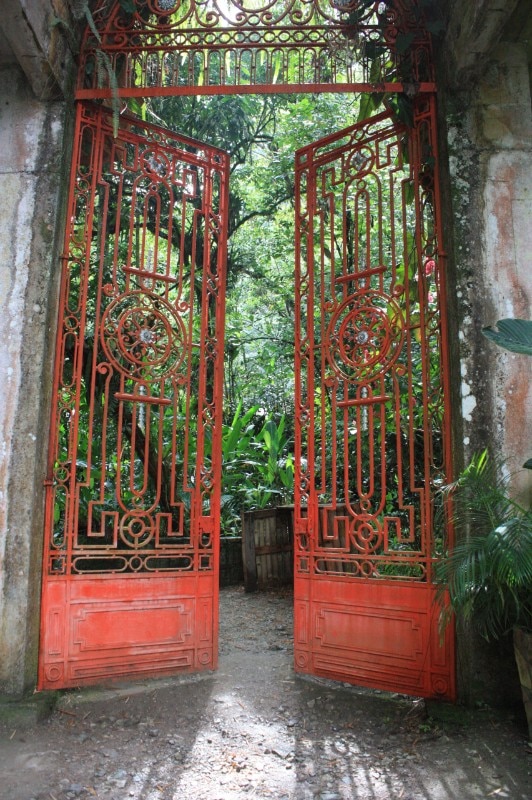
Las Pozas. A Surrealist sanctuary deep in the forest
Edward James auctioned off his painting collection to build Las Pozas, funding the project with what would today be a fivemillion-dollar budget. The project involved 40 workers and consists in 36 structures scattered across 32 hectares. The building process stopped in 1984, year of his death.
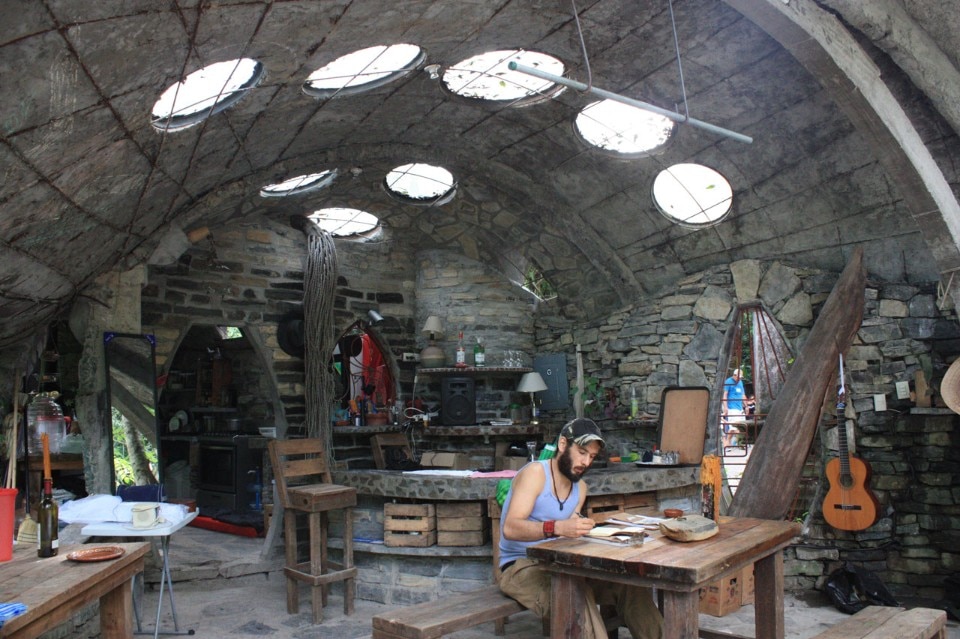
Las Pozas. A Surrealist sanctuary deep in the forest
Today, Las Pozas is a magical place that takes a whole day to explore. Run by Fundación Pedro y Elena Hernández, it has now become a classic tourist sight with a hostel echoing its spirit.

Las Pozas. A Surrealist sanctuary deep in the forest
Everything in Xilitla seems left unfinished. The houses follow no
logical pattern, baffling the European visitor. James’s mark is strong and the aesthetics are welded to his spirit, forget the architecture.

Las Pozas. A Surrealist sanctuary deep in the forest
Everything in Xilitla seems left unfinished. The houses follow no logical pattern, baffling the European visitor. James’s mark is strong and the aesthetics are welded to his spirit, forget the architecture.

Las Pozas. A Surrealist sanctuary deep in the forest
Everything in Xilitla seems left unfinished. The houses follow no logical pattern, baffling the European visitor. James’s mark is strong and the aesthetics are welded to his spirit, forget the architecture.

Las Pozas. A Surrealist sanctuary deep in the forest
Everything in Xilitla seems left unfinished. The houses follow no logical pattern, baffling the European visitor. James’s mark is strong and the aesthetics are welded to his spirit, forget the architecture.
Edward James and Plutarco Gastelum, El Castillo, Xilitla

Las Pozas. A Surrealist sanctuary deep in the forest
Everything in Xilitla seems left unfinished. The houses follow no logical pattern, baffling the European visitor. James’s mark is strong and the aesthetics are welded to his spirit, forget the architecture.

Las Pozas. A Surrealist sanctuary deep in the forest
Edward James auctioned off his painting collection to build Las Pozas, funding the project with what would today be a fivemillion-dollar budget. The project involved 40 workers and consists in 36 structures scattered across 32 hectares. The building process stopped in 1984, year of his death.

Las Pozas. A Surrealist sanctuary deep in the forest
Edward James auctioned off his painting collection to build Las Pozas, funding the project with what would today be a fivemillion-dollar budget. The project involved 40 workers and consists in 36 structures scattered across 32 hectares. The building process stopped in 1984, year of his death.

Las Pozas. A Surrealist sanctuary deep in the forest
Edward James auctioned off his painting collection to build Las Pozas, funding the project with what would today be a fivemillion-dollar budget. The project involved 40 workers and consists in 36 structures scattered across 32 hectares. The building process stopped in 1984, year of his death.

Las Pozas. A Surrealist sanctuary deep in the forest
Edward James auctioned off his painting collection to build Las Pozas, funding the project with what would today be a fivemillion-dollar budget. The project involved 40 workers and consists in 36 structures scattered across 32 hectares. The building process stopped in 1984, year of his death.

Las Pozas. A Surrealist sanctuary deep in the forest
Edward James auctioned off his painting collection to build Las Pozas, funding the project with what would today be a fivemillion-dollar budget. The project involved 40 workers and consists in 36 structures scattered across 32 hectares. The building process stopped in 1984, year of his death.

Las Pozas. A Surrealist sanctuary deep in the forest
Edward James auctioned off his painting collection to build Las Pozas, funding the project with what would today be a fivemillion-dollar budget. The project involved 40 workers and consists in 36 structures scattered across 32 hectares. The building process stopped in 1984, year of his death.

Las Pozas. A Surrealist sanctuary deep in the forest
Edward James auctioned off his painting collection to build Las Pozas, funding the project with what would today be a fivemillion-dollar budget. The project involved 40 workers and consists in 36 structures scattered across 32 hectares. The building process stopped in 1984, year of his death.

Las Pozas. A Surrealist sanctuary deep in the forest
Edward James auctioned off his painting collection to build Las Pozas, funding the project with what would today be a fivemillion-dollar budget. The project involved 40 workers and consists in 36 structures scattered across 32 hectares. The building process stopped in 1984, year of his death.

Las Pozas. A Surrealist sanctuary deep in the forest
Edward James auctioned off his painting collection to build Las Pozas, funding the project with what would today be a fivemillion-dollar budget. The project involved 40 workers and consists in 36 structures scattered across 32 hectares. The building process stopped in 1984, year of his death.

Las Pozas. A Surrealist sanctuary deep in the forest
Edward James auctioned off his painting collection to build Las Pozas, funding the project with what would today be a fivemillion-dollar budget. The project involved 40 workers and consists in 36 structures scattered across 32 hectares. The building process stopped in 1984, year of his death.

Las Pozas. A Surrealist sanctuary deep in the forest
Edward James auctioned off his painting collection to build Las Pozas, funding the project with what would today be a fivemillion-dollar budget. The project involved 40 workers and consists in 36 structures scattered across 32 hectares. The building process stopped in 1984, year of his death.

Las Pozas. A Surrealist sanctuary deep in the forest
Edward James auctioned off his painting collection to build Las Pozas, funding the project with what would today be a fivemillion-dollar budget. The project involved 40 workers and consists in 36 structures scattered across 32 hectares. The building process stopped in 1984, year of his death.

Las Pozas. A Surrealist sanctuary deep in the forest
Edward James auctioned off his painting collection to build Las Pozas, funding the project with what would today be a fivemillion-dollar budget. The project involved 40 workers and consists in 36 structures scattered across 32 hectares. The building process stopped in 1984, year of his death.

Las Pozas. A Surrealist sanctuary deep in the forest
Edward James auctioned off his painting collection to build Las Pozas, funding the project with what would today be a fivemillion-dollar budget. The project involved 40 workers and consists in 36 structures scattered across 32 hectares. The building process stopped in 1984, year of his death.

Las Pozas. A Surrealist sanctuary deep in the forest
Edward James auctioned off his painting collection to build Las Pozas, funding the project with what would today be a fivemillion-dollar budget. The project involved 40 workers and consists in 36 structures scattered across 32 hectares. The building process stopped in 1984, year of his death.

Las Pozas. A Surrealist sanctuary deep in the forest
Edward James auctioned off his painting collection to build Las Pozas, funding the project with what would today be a fivemillion-dollar budget. The project involved 40 workers and consists in 36 structures scattered across 32 hectares. The building process stopped in 1984, year of his death.

Las Pozas. A Surrealist sanctuary deep in the forest
Edward James auctioned off his painting collection to build Las Pozas, funding the project with what would today be a fivemillion-dollar budget. The project involved 40 workers and consists in 36 structures scattered across 32 hectares. The building process stopped in 1984, year of his death.

Las Pozas. A Surrealist sanctuary deep in the forest
Edward James auctioned off his painting collection to build Las Pozas, funding the project with what would today be a fivemillion-dollar budget. The project involved 40 workers and consists in 36 structures scattered across 32 hectares. The building process stopped in 1984, year of his death.

Las Pozas. A Surrealist sanctuary deep in the forest
Edward James auctioned off his painting collection to build Las Pozas, funding the project with what would today be a fivemillion-dollar budget. The project involved 40 workers and consists in 36 structures scattered across 32 hectares. The building process stopped in 1984, year of his death.

Las Pozas. A Surrealist sanctuary deep in the forest
Edward James auctioned off his painting collection to build Las Pozas, funding the project with what would today be a fivemillion-dollar budget. The project involved 40 workers and consists in 36 structures scattered across 32 hectares. The building process stopped in 1984, year of his death.

Las Pozas. A Surrealist sanctuary deep in the forest
Edward James auctioned off his painting collection to build Las Pozas, funding the project with what would today be a fivemillion-dollar budget. The project involved 40 workers and consists in 36 structures scattered across 32 hectares. The building process stopped in 1984, year of his death.

Las Pozas. A Surrealist sanctuary deep in the forest
Edward James auctioned off his painting collection to build Las Pozas, funding the project with what would today be a fivemillion-dollar budget. The project involved 40 workers and consists in 36 structures scattered across 32 hectares. The building process stopped in 1984, year of his death.

Las Pozas. A Surrealist sanctuary deep in the forest
Edward James auctioned off his painting collection to build Las Pozas, funding the project with what would today be a fivemillion-dollar budget. The project involved 40 workers and consists in 36 structures scattered across 32 hectares. The building process stopped in 1984, year of his death.

Las Pozas. A Surrealist sanctuary deep in the forest
Edward James auctioned off his painting collection to build Las Pozas, funding the project with what would today be a fivemillion-dollar budget. The project involved 40 workers and consists in 36 structures scattered across 32 hectares. The building process stopped in 1984, year of his death.

Las Pozas. A Surrealist sanctuary deep in the forest
Today, Las Pozas is a magical place that takes a whole day to explore. Run by Fundación Pedro y Elena Hernández, it has now become a classic tourist sight with a hostel echoing its spirit.
The idea for the project came to Edward James when, returning from a trip to New York, he found his orchid garden, which he had tended for over 20 years, completely destroyed by the snow – an unprecedented event in Xilitla. There and then, he decided he would build himself a reinforced-concrete and stone Garden of Eden, because “the building of your home should never end”.
Everything in Xilitla seems left unfinished. James’s mark is strong and the aesthetics are welded to his spirit, forget the architecture.
Edward James auctioned off his painting collection to build Las Pozas, funding the project with what would today be a five million-dollar budget. The project involved 40 workers and consists in 36 structures scattered across 32 hectares. The building process ended in 1984, the year he died.
Everything in Xilitla seems left unfinished. The houses follow no logical pattern, baffling the European visitor. James’s mark is strong and the aesthetics are welded to his spirit, forget the architecture. Edward James was no architect and, if his structures are solid, it is only because he used double reinforcements, “for safety”. Today, Las Pozas is a magical place that takes a whole day to explore. Run by Fundación Pedro y Elena Hernández, it has now become a classic tourist sight with a hostel echoing its spirit.
“When I was a child I used to have the most extraordinary Surrealist fantasies. I think (…) my fantasy was developed so intensely was that I was forced to rest (...) when I should have been allowed to run around in the garden,” explained Edward James in a 1978 BBC documentary about him


